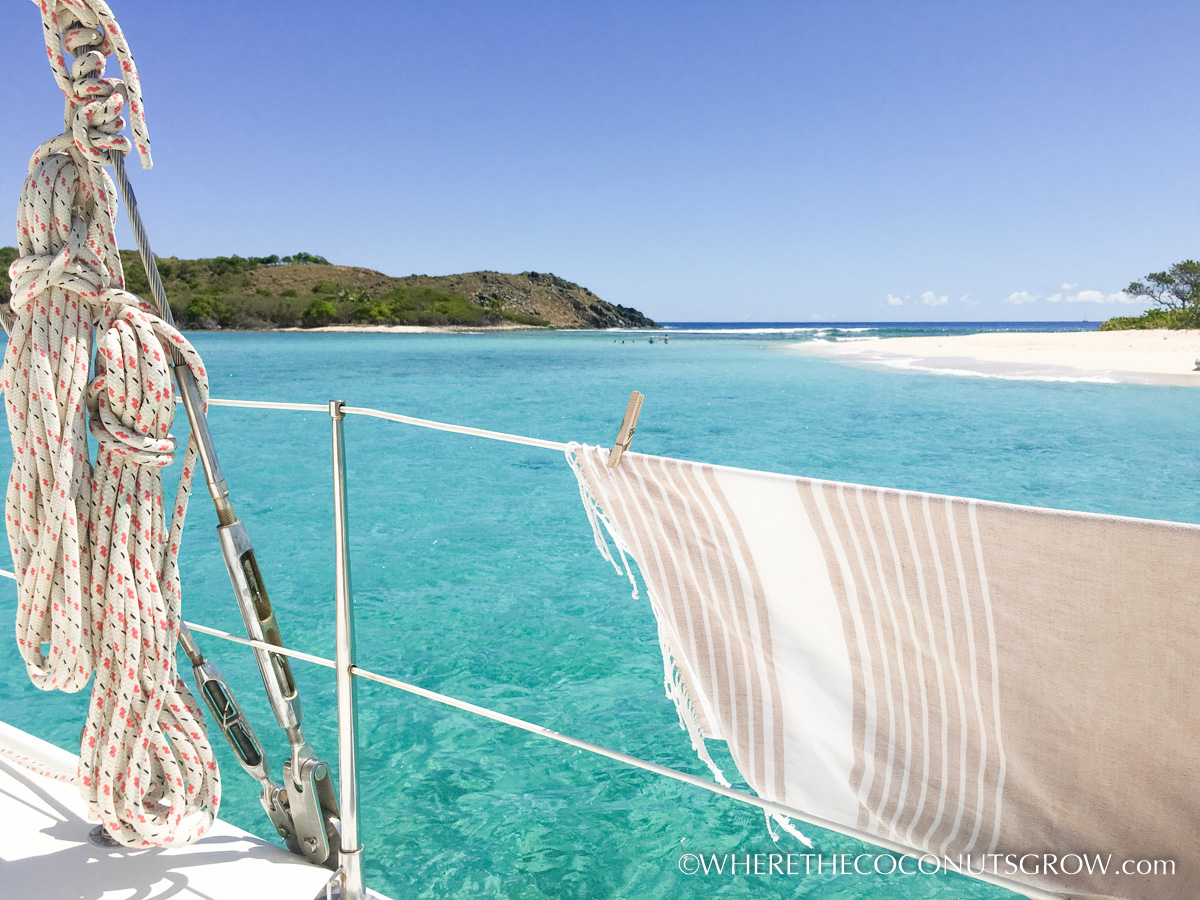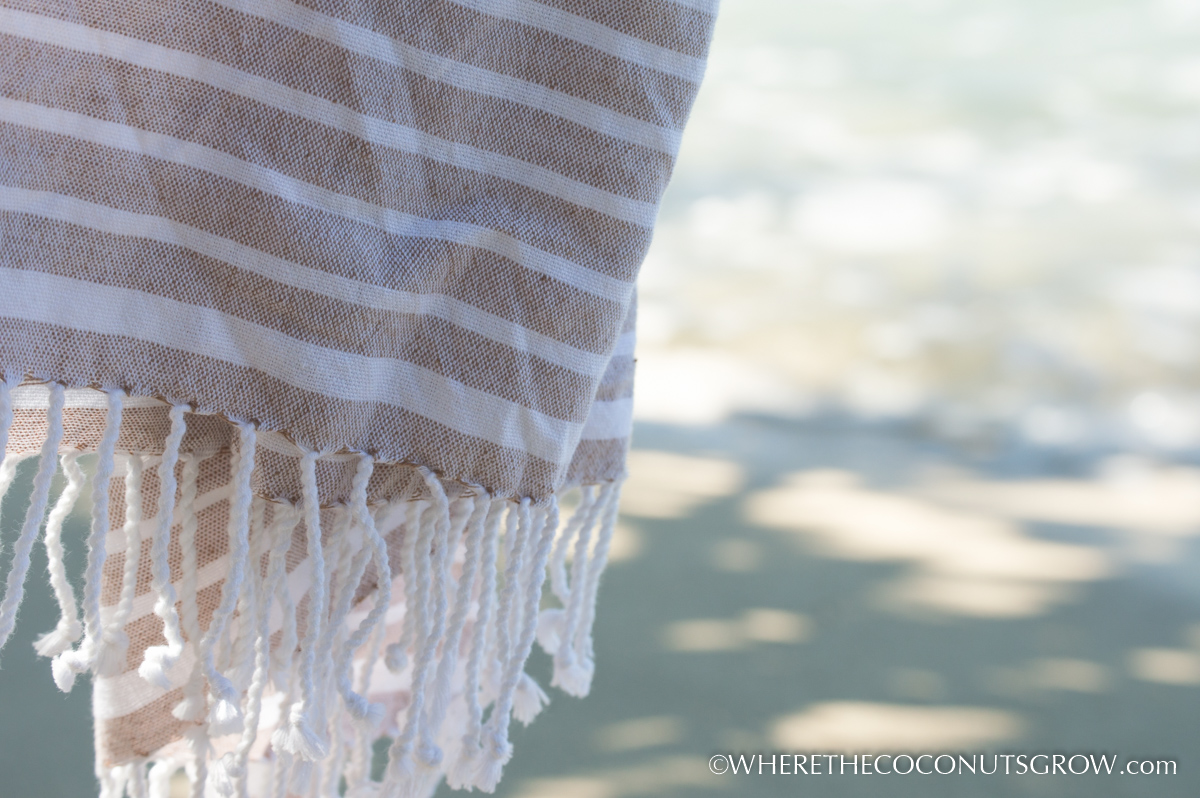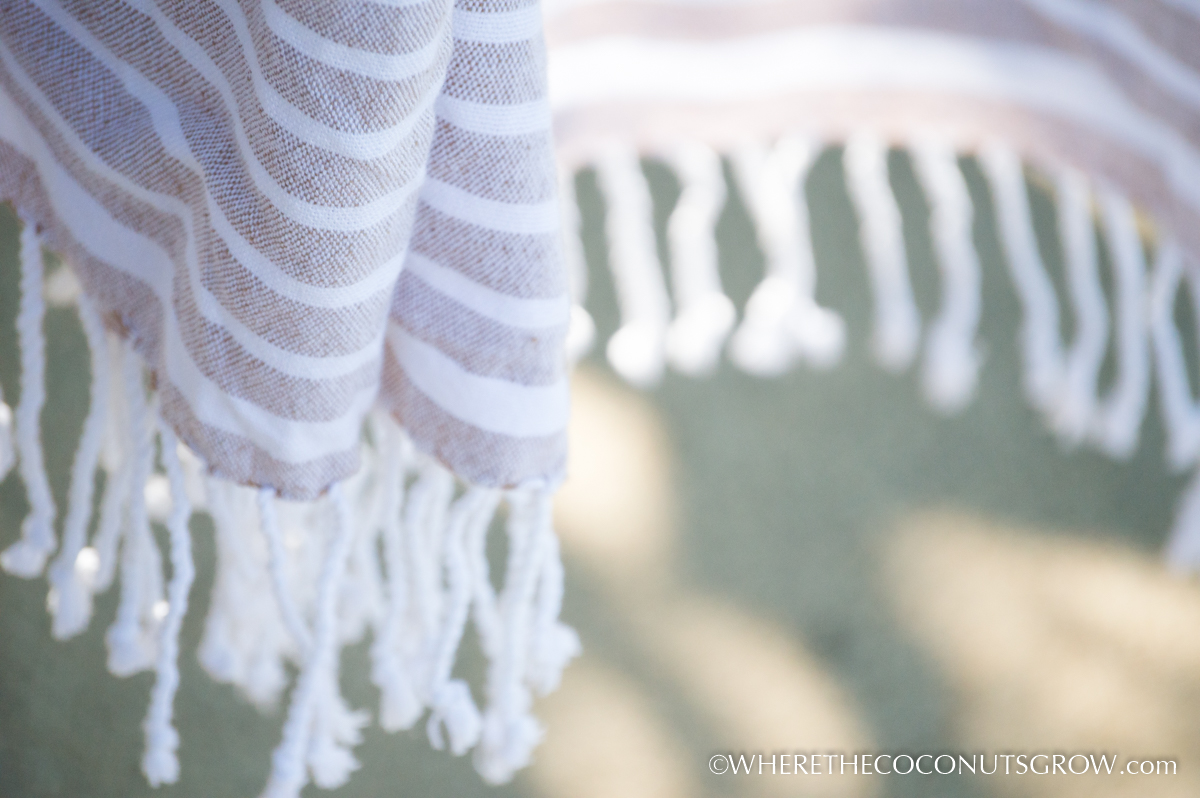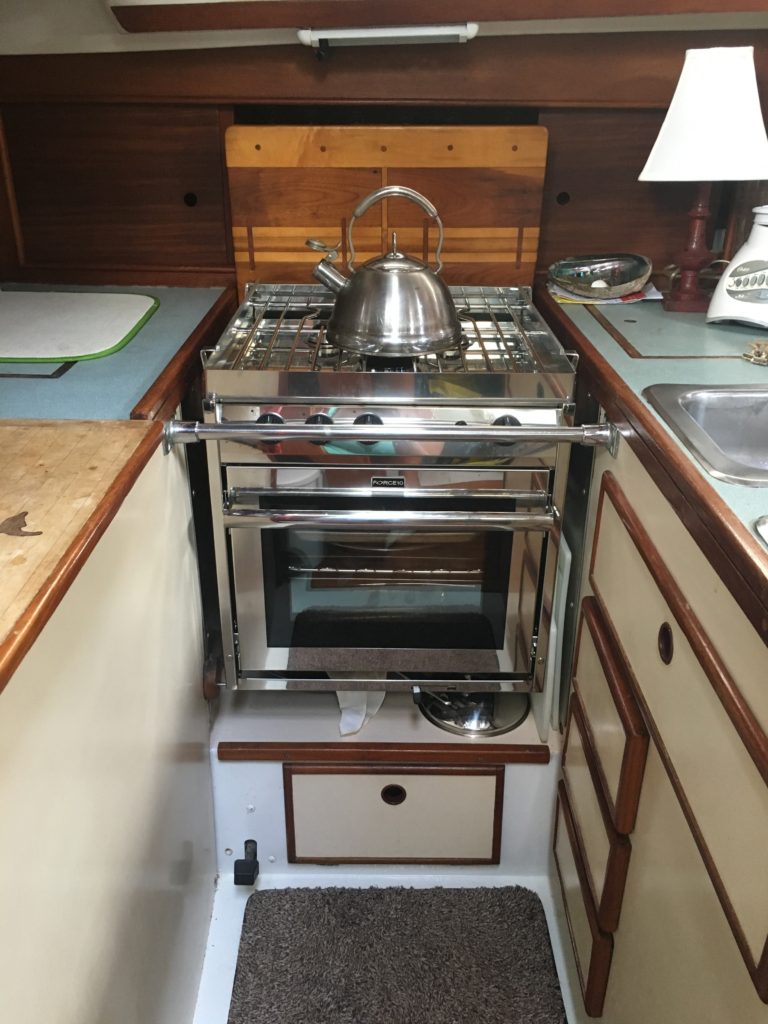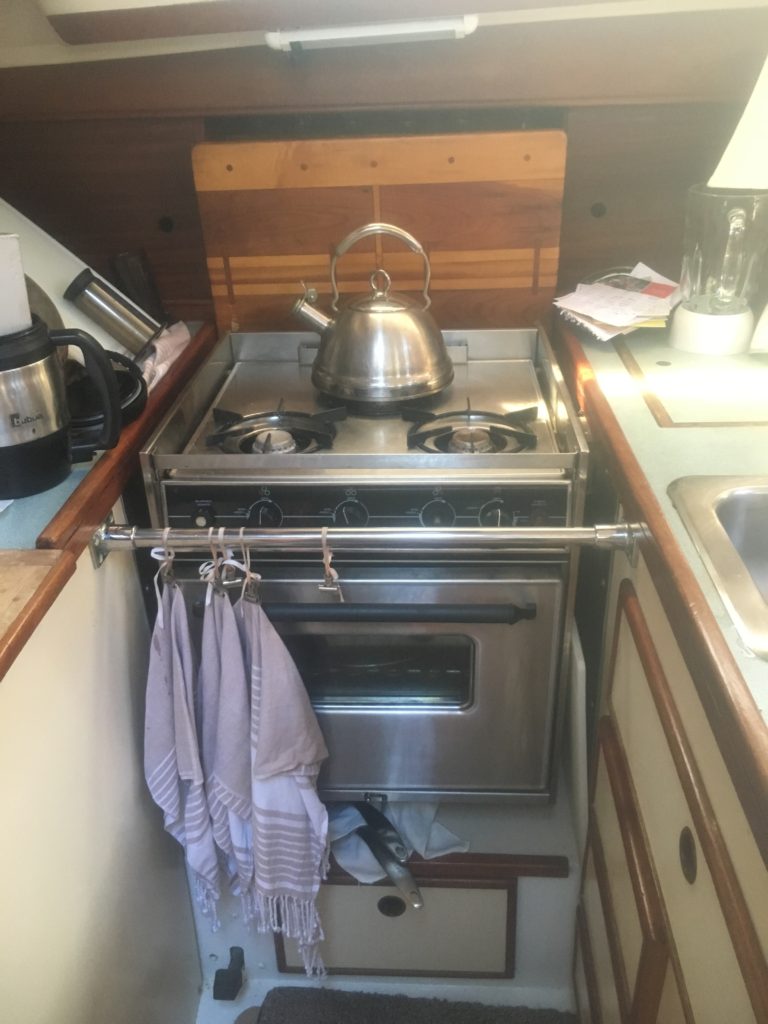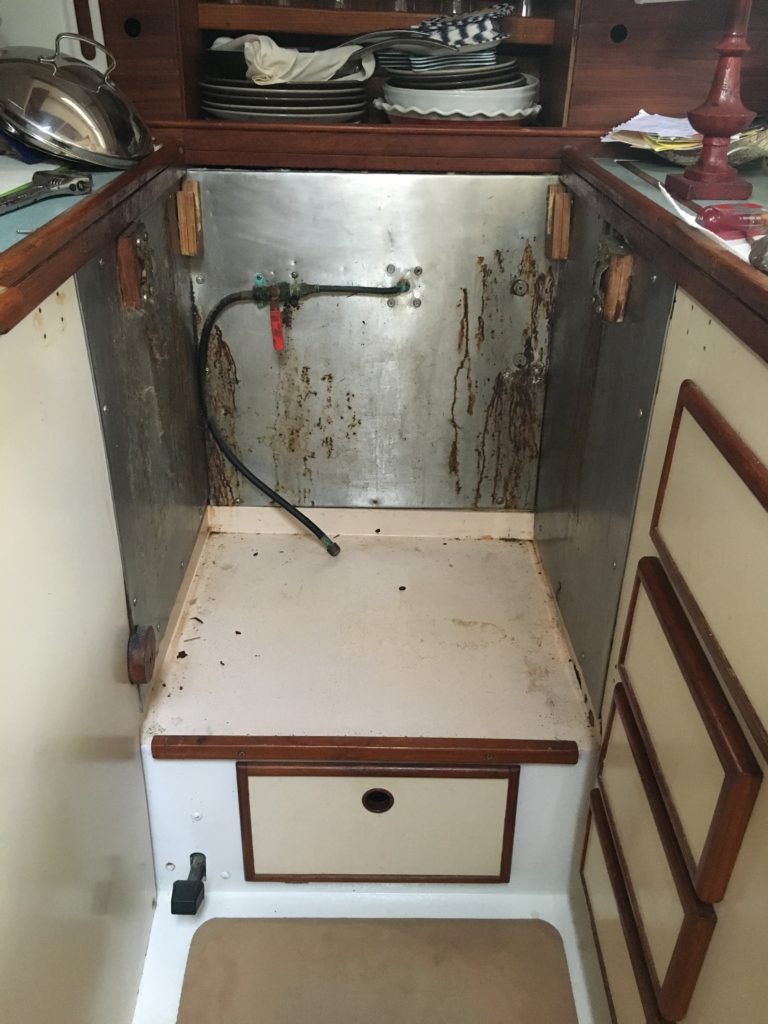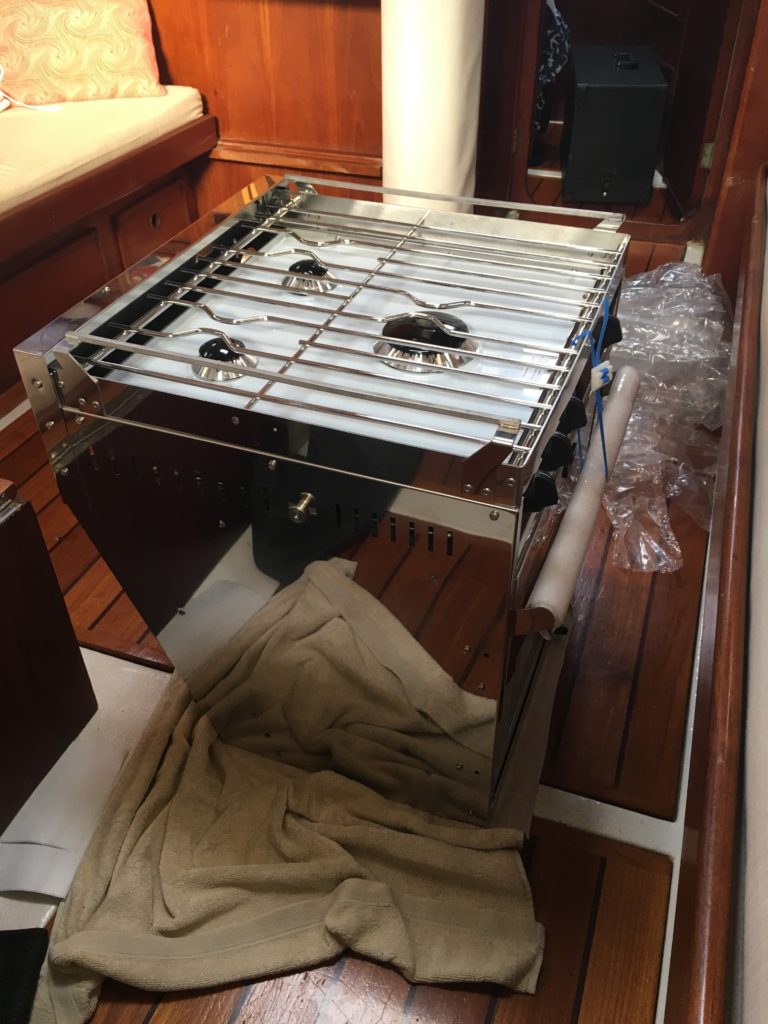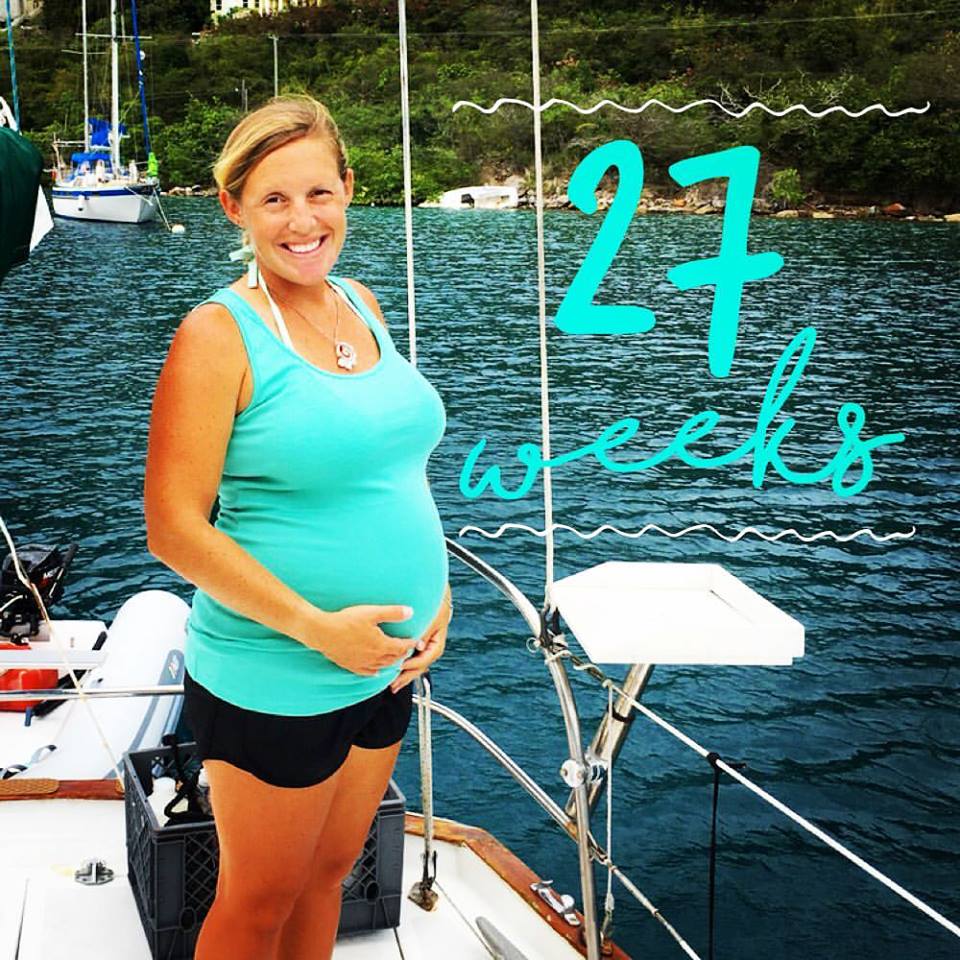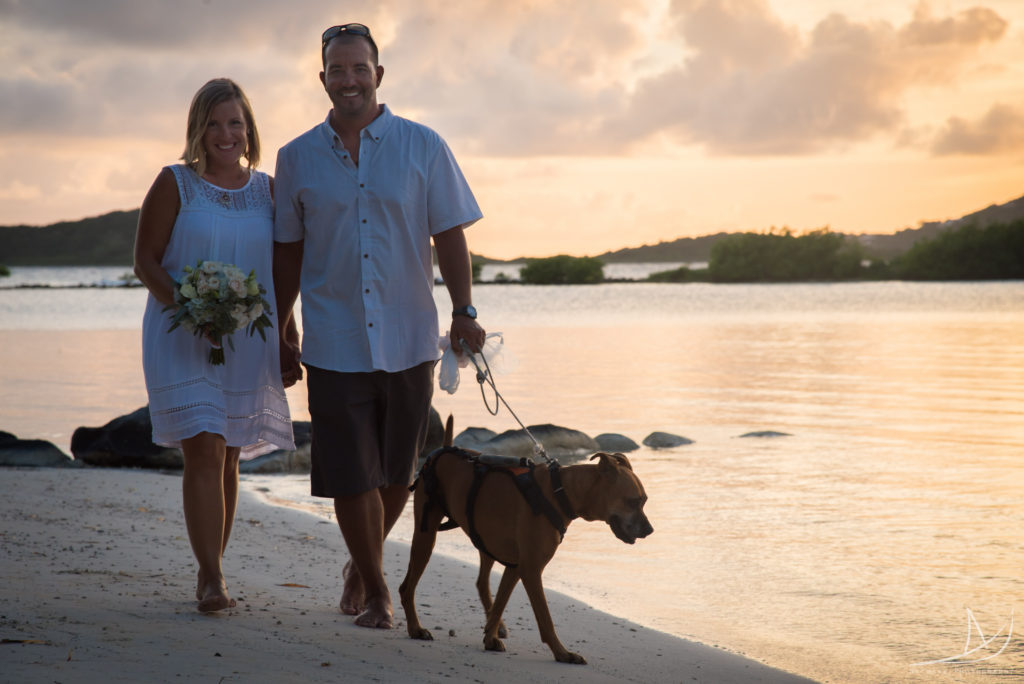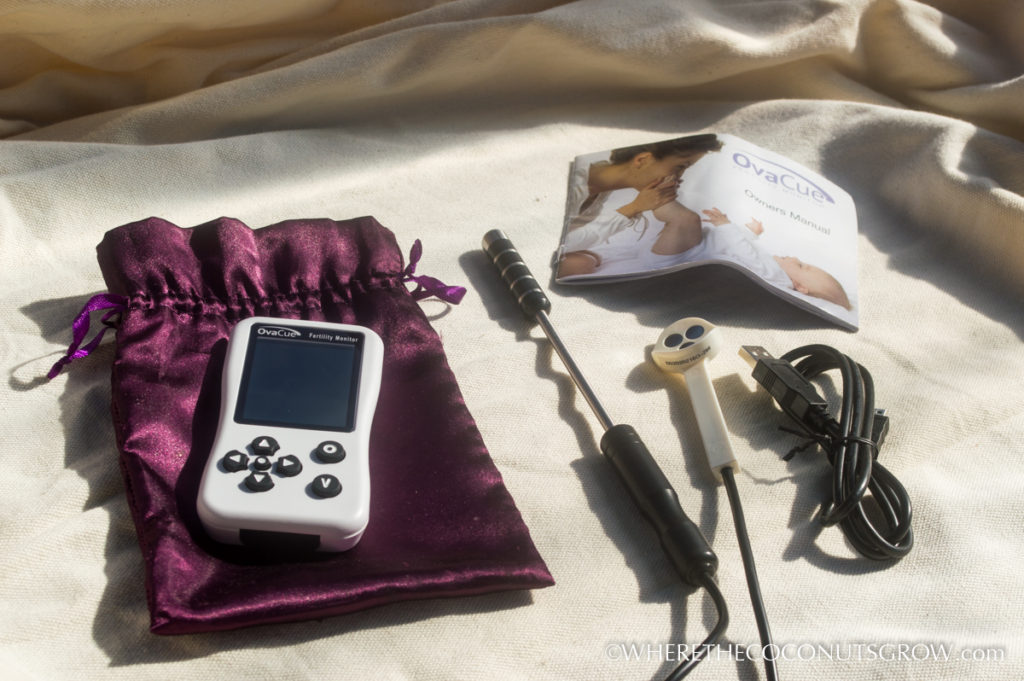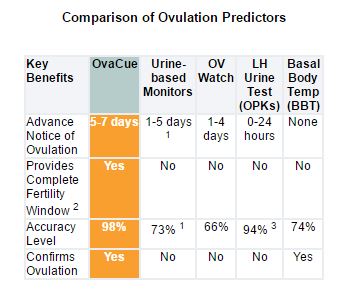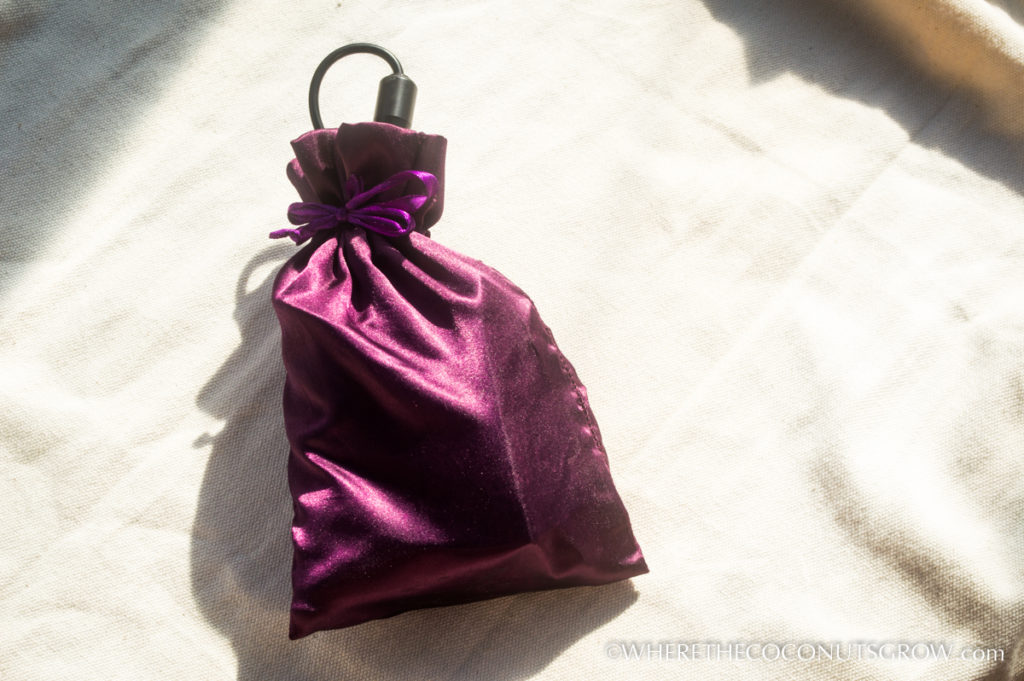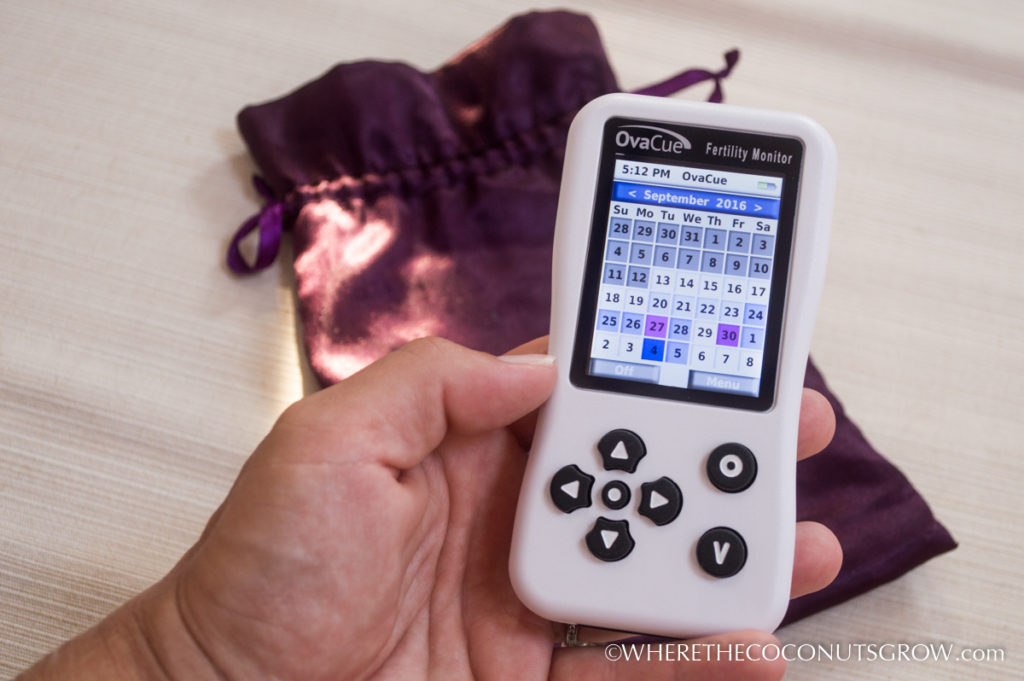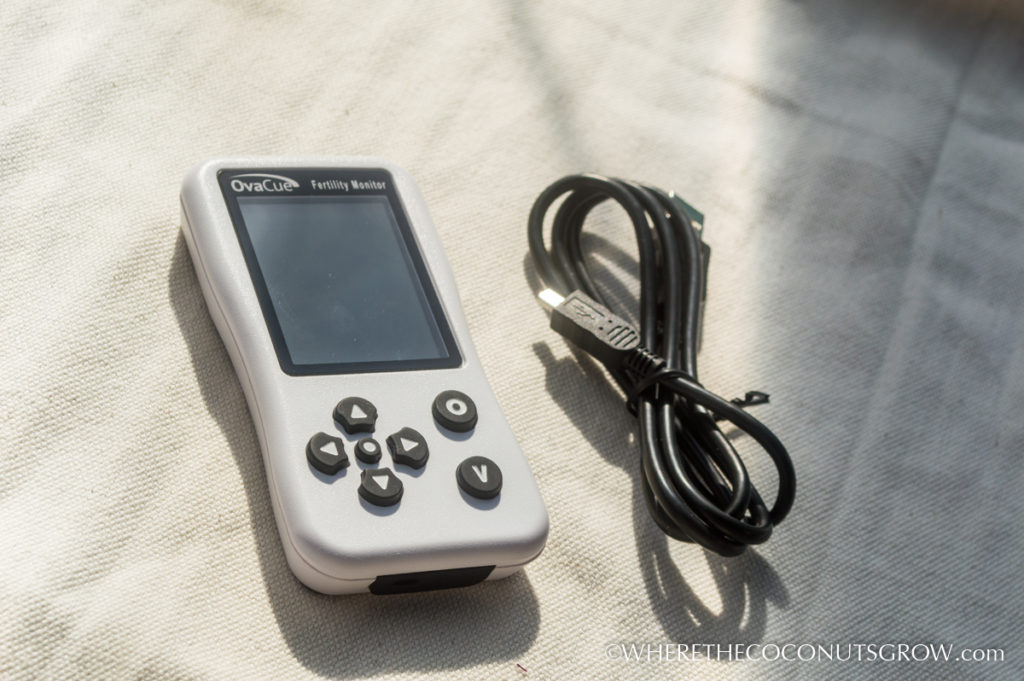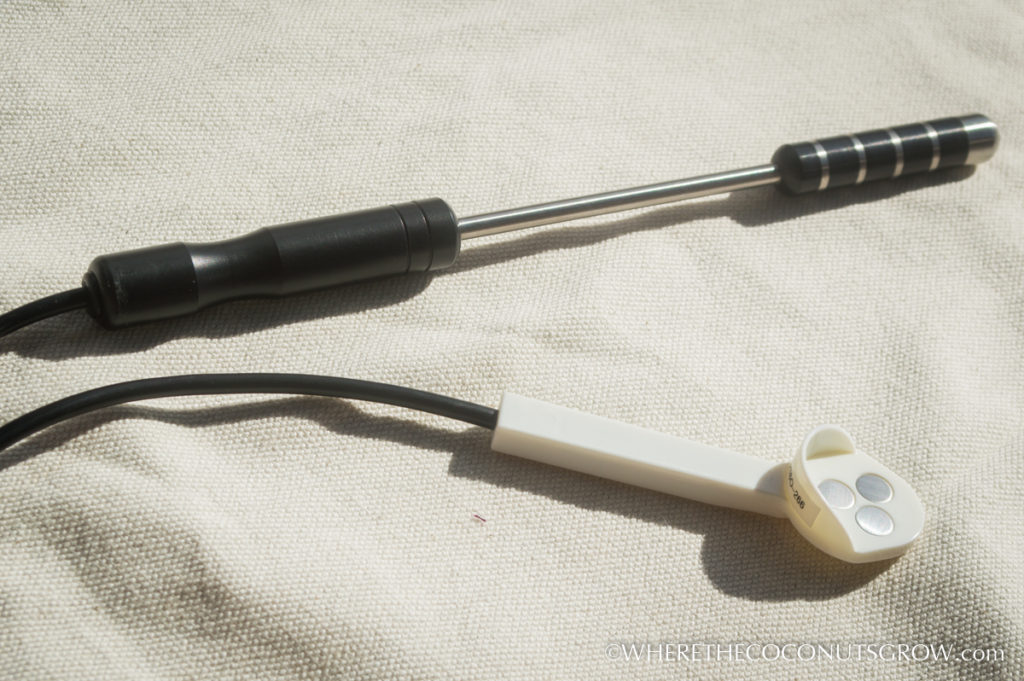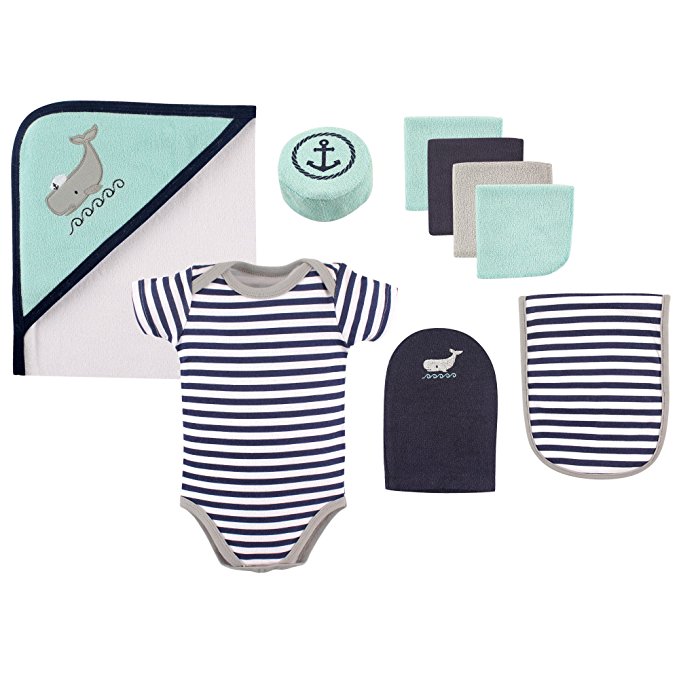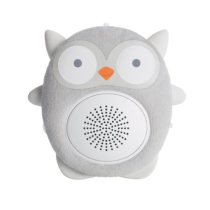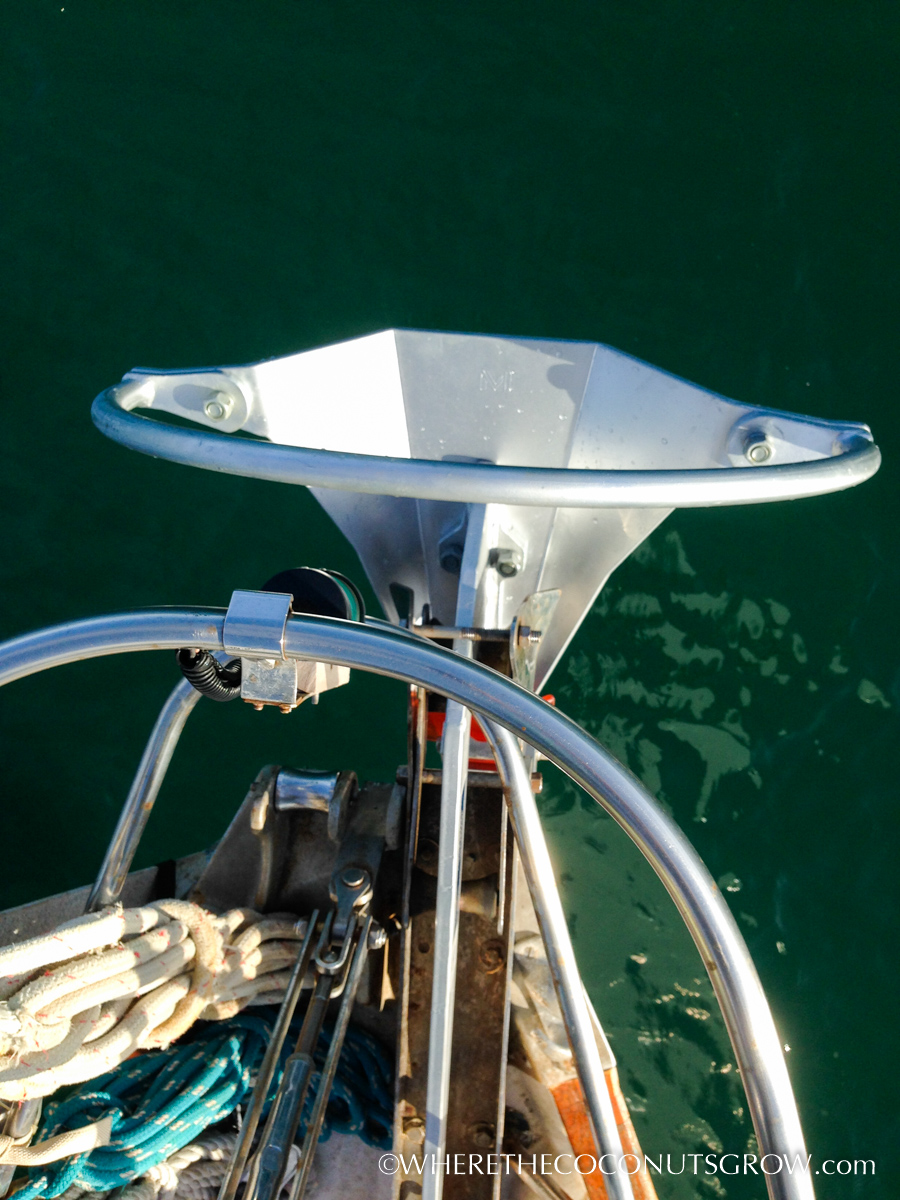
*** SPOILER ALERT: Jump to the bottom of this post to find out what happened to our Mantus Anchor in 240+ mph winds during Hurricane Irma!! ***
Without a doubt, our most important piece of equipment that we rely on to keep our boat safe is our anchor. When we first started cruising four years ago, it was a hot topic in our home for quite awhile. There were lots of other cruisers discussing what kind of anchor they trust and why. We did our research and eventually Peter and I decided that the Mantus and Rocna anchors had the best design on the market. Both having a relatively new-school design, not many of the old salts were really talking much about them yet. Rocna was a hot name but we had some first hand experience of several Rocna’s dragging near us – one time where Peter had to jump on board and help rescue a boat when their Rocna didn’t hold.
After talking extensively with Mantus Marine, watching videos of their product in action, and reviewing all the info they had on their website, we were sold. Our previous anchor was a 45lb Delta and we upgraded to a galvanized 65lb Mantus – a decision that made us feel way safer knowing we were moving up to not only a storm anchor rated for greater than 50 knots, but an anchor that could be trusted in all kinds of seabeds.
The anchor itself came in three pieces that got bolted together. The installation was a little messy with all the special bolt grease but it was fairly easy.
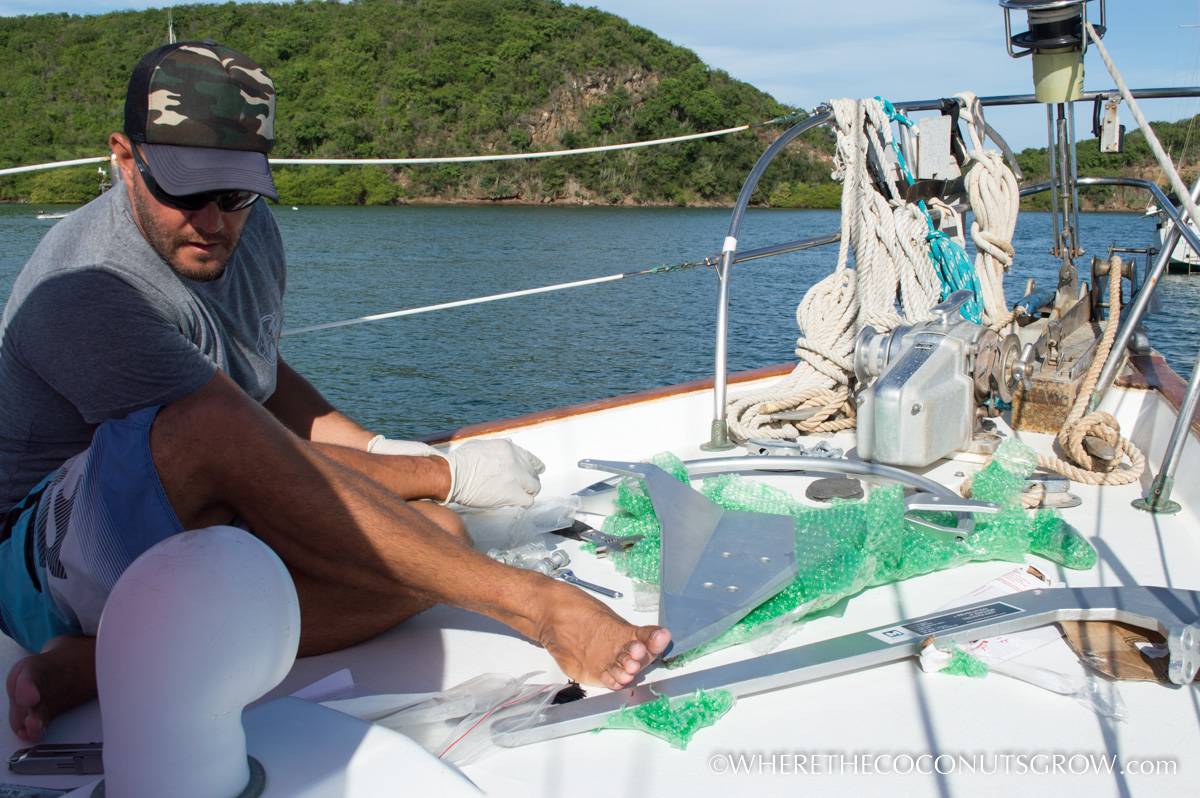
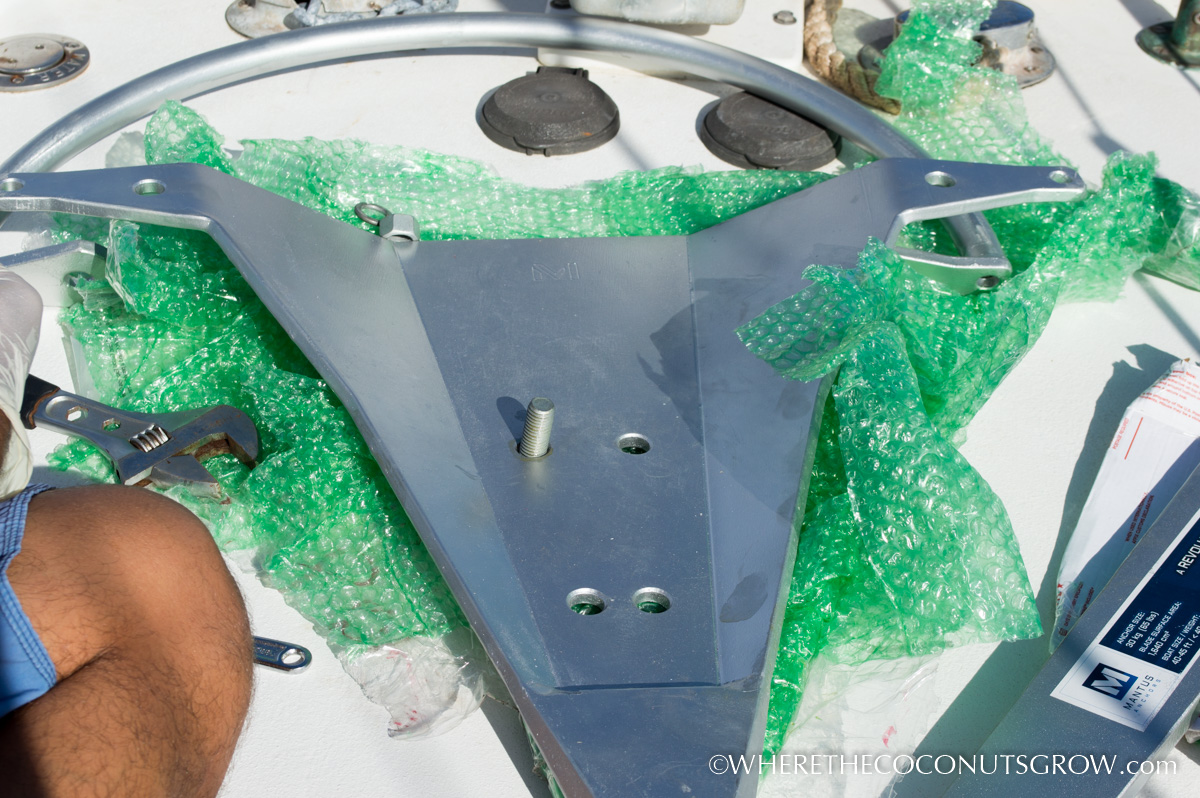
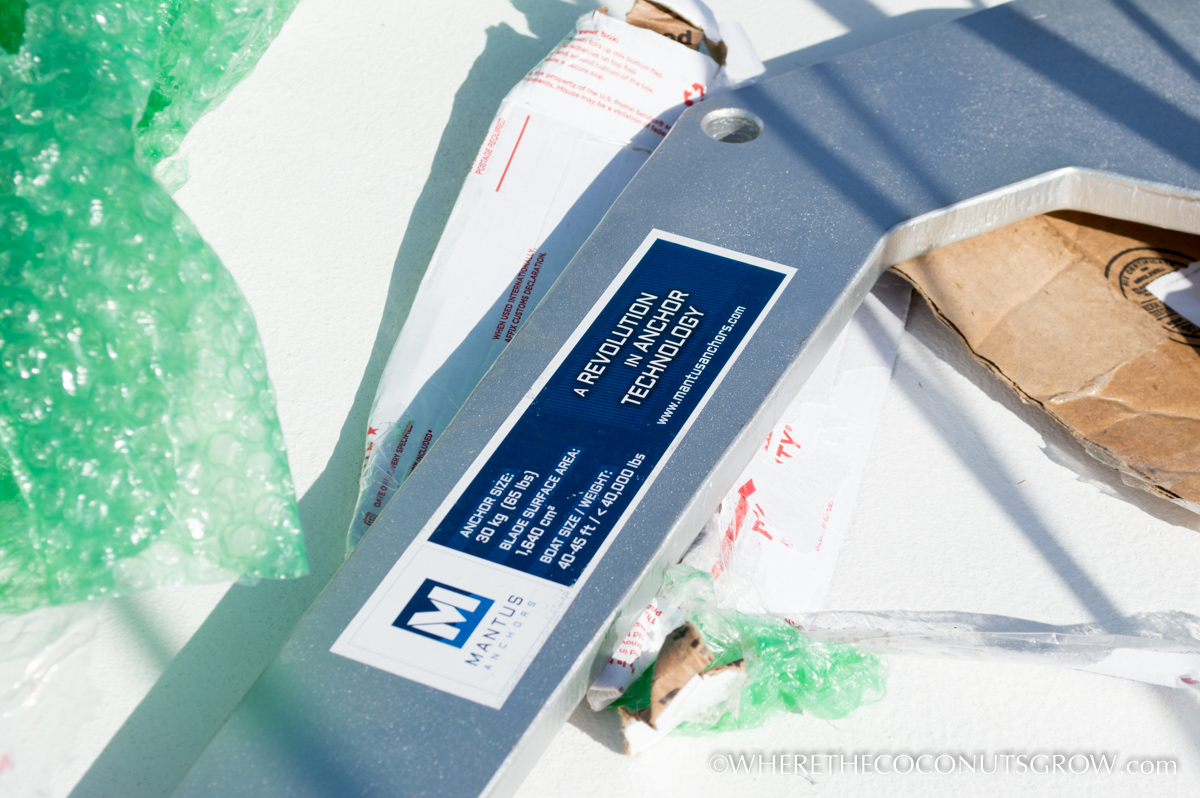
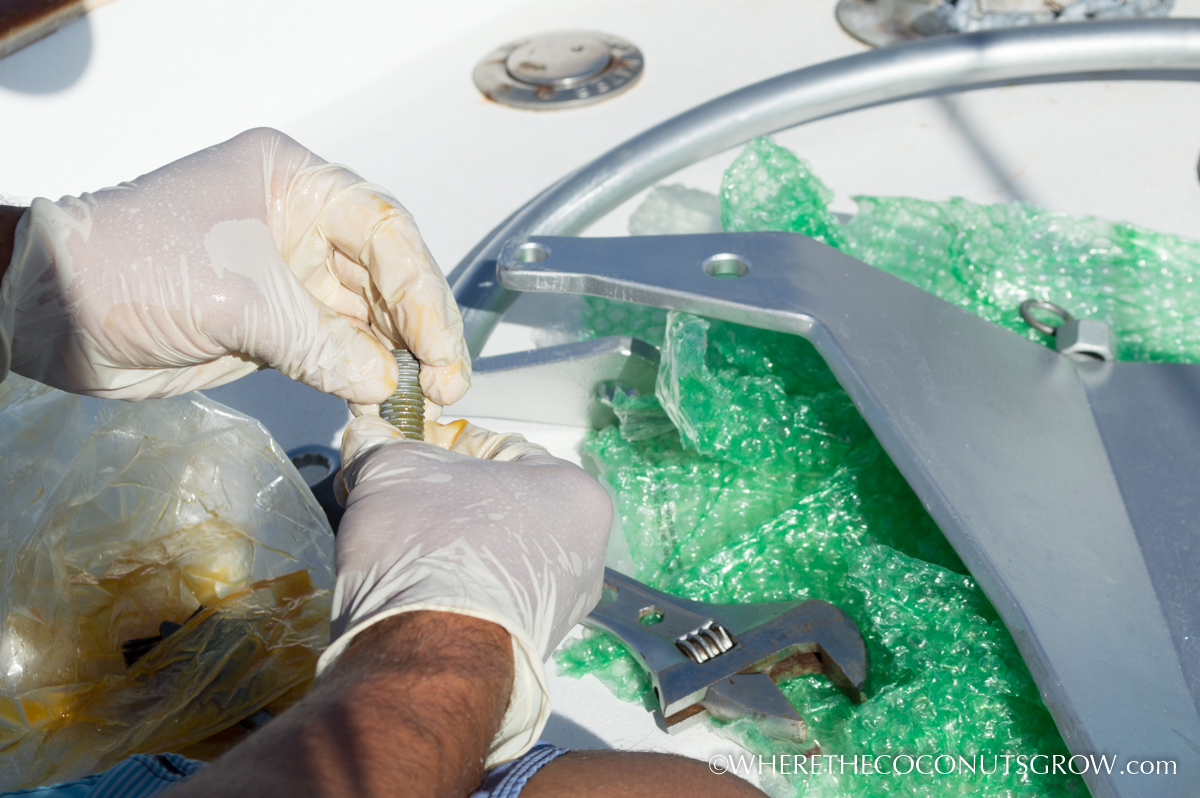
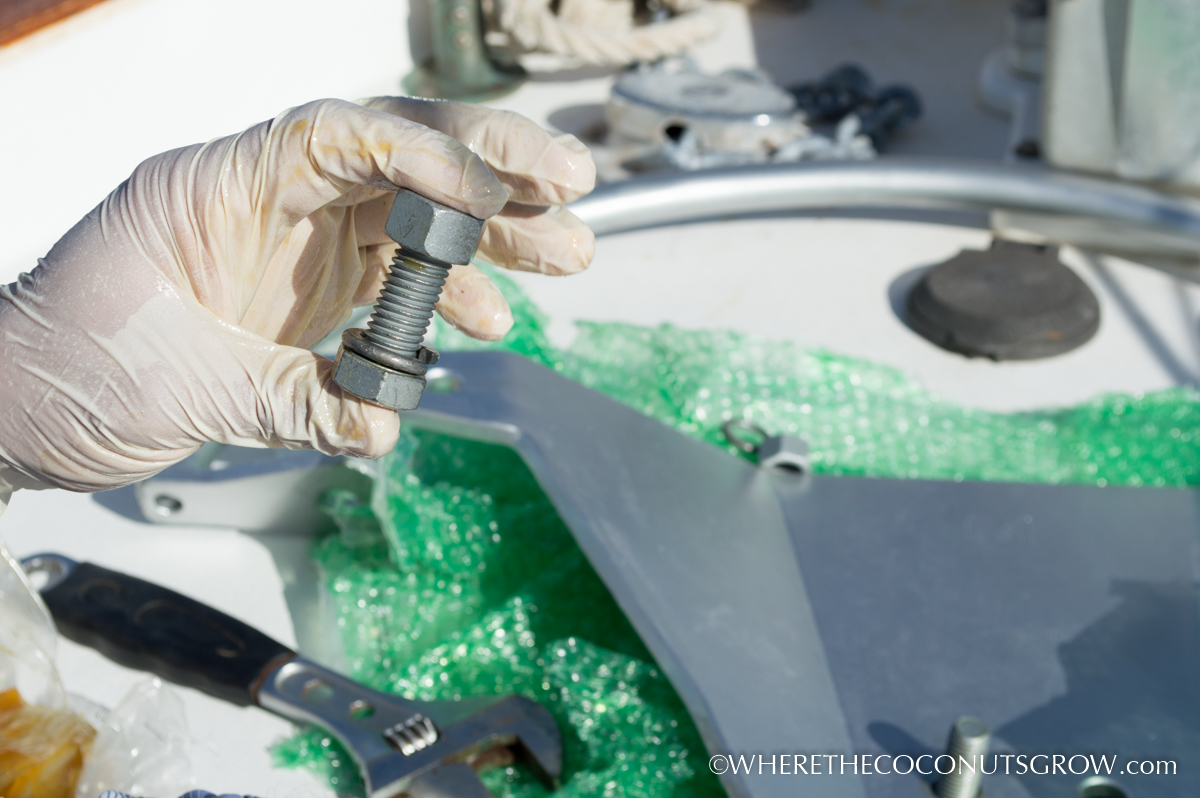
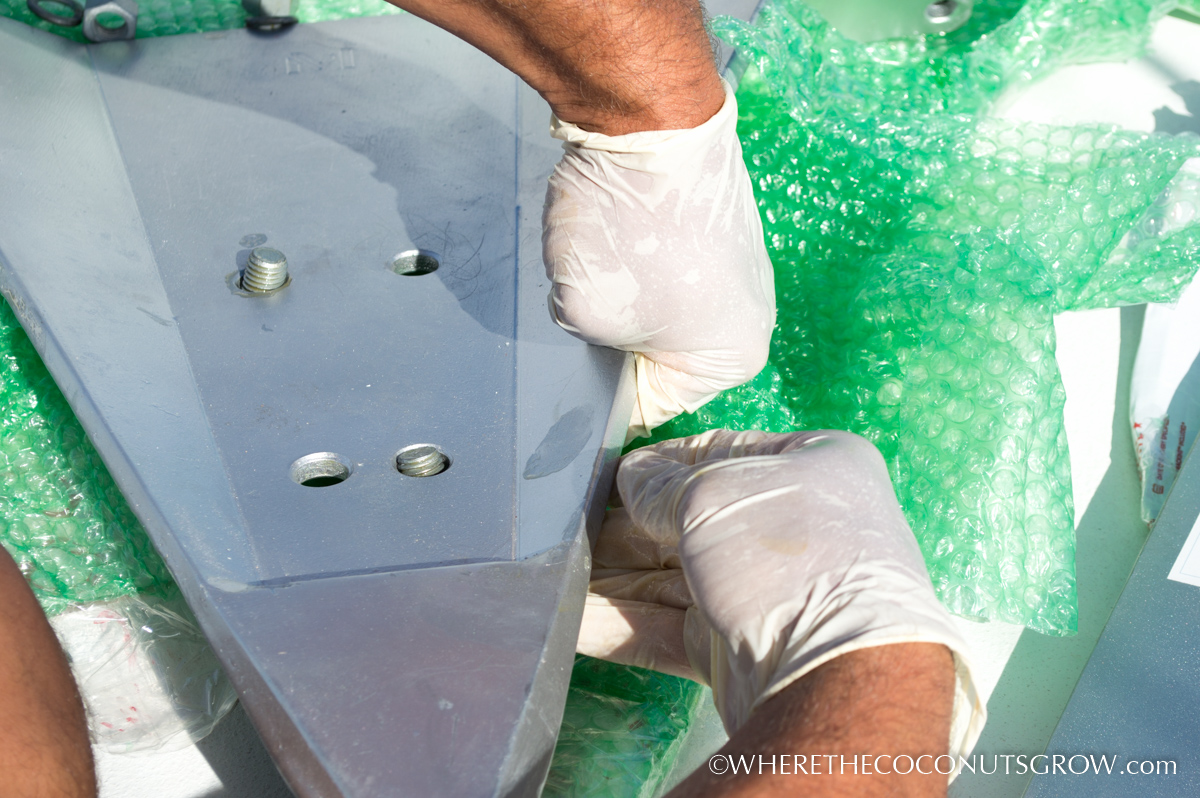
Swapping out the old anchor for the new anchor was the hardest part about it since we needed three people. I drove the boat, Peter was on the bow operating the windlass and our friend Mike was in our dinghy ready to guide in the very muddy old anchor and chain and then feed Peter up the new chain through the bow roller. The new anchor fit perfectly and we admired it for a little while before lowering it into some seriously thick mangrove mud.
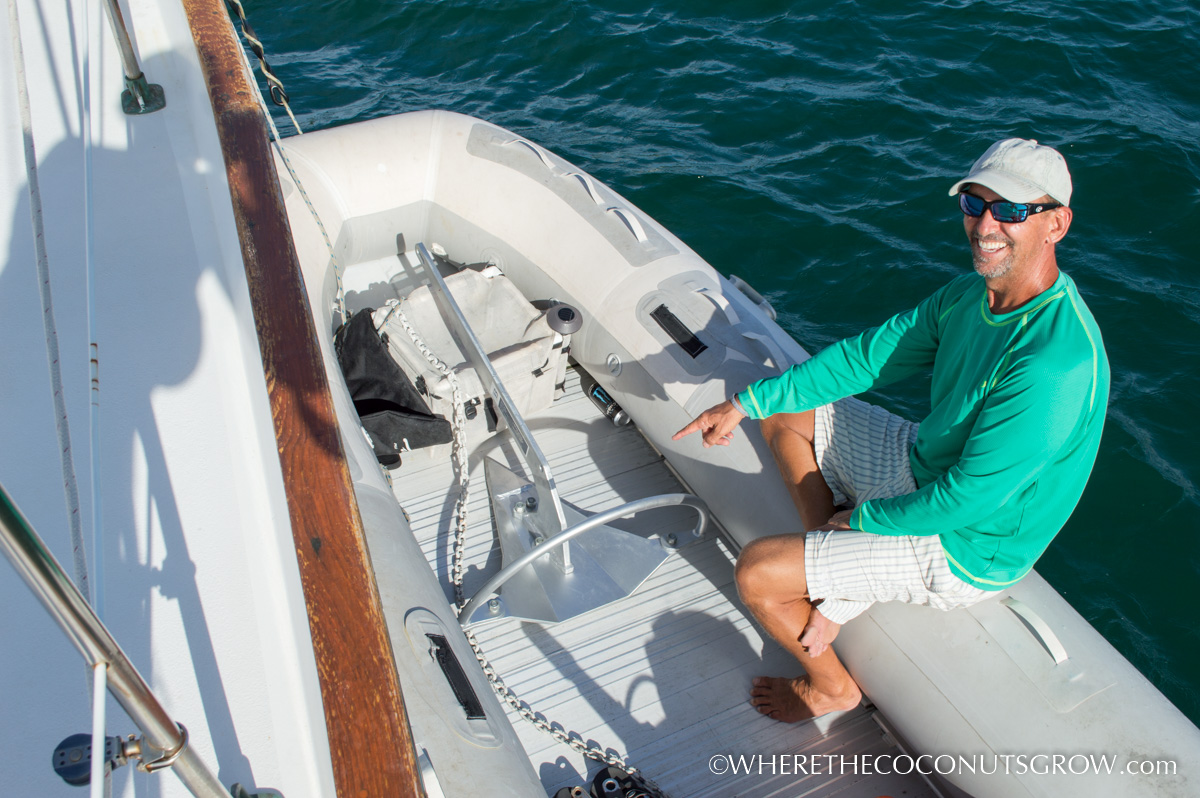
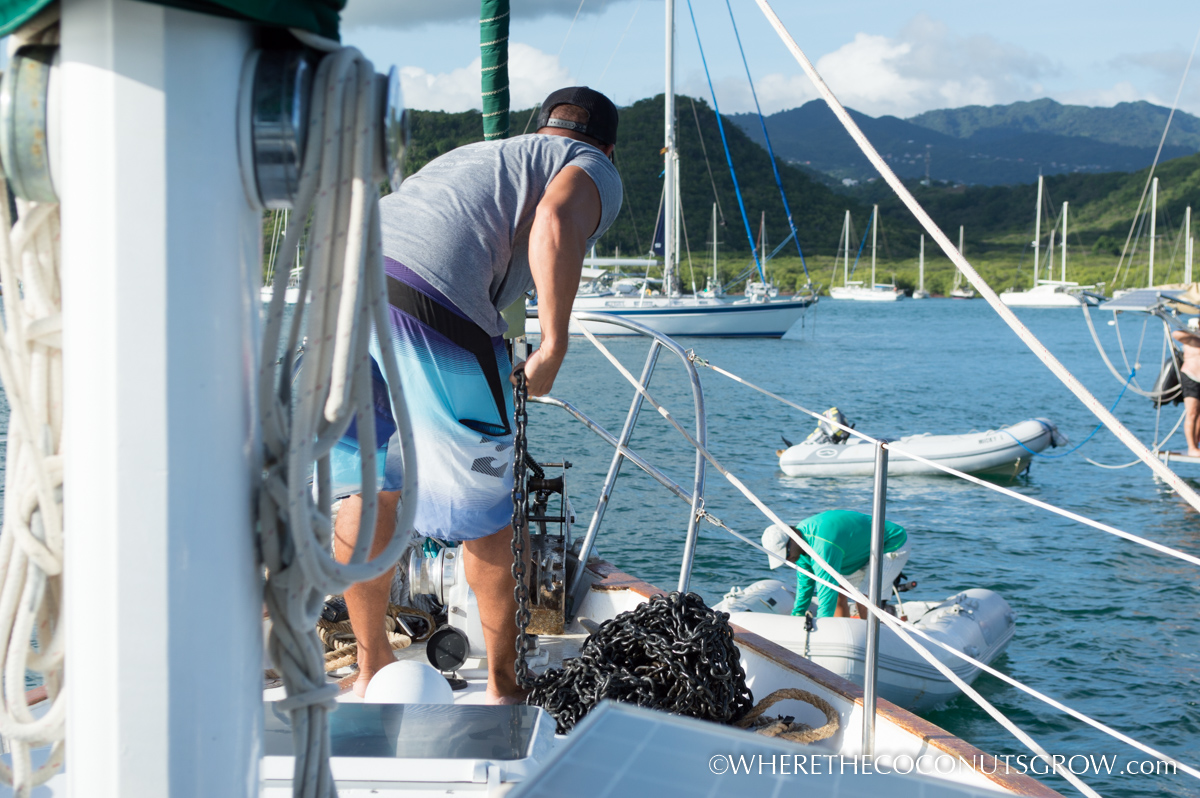
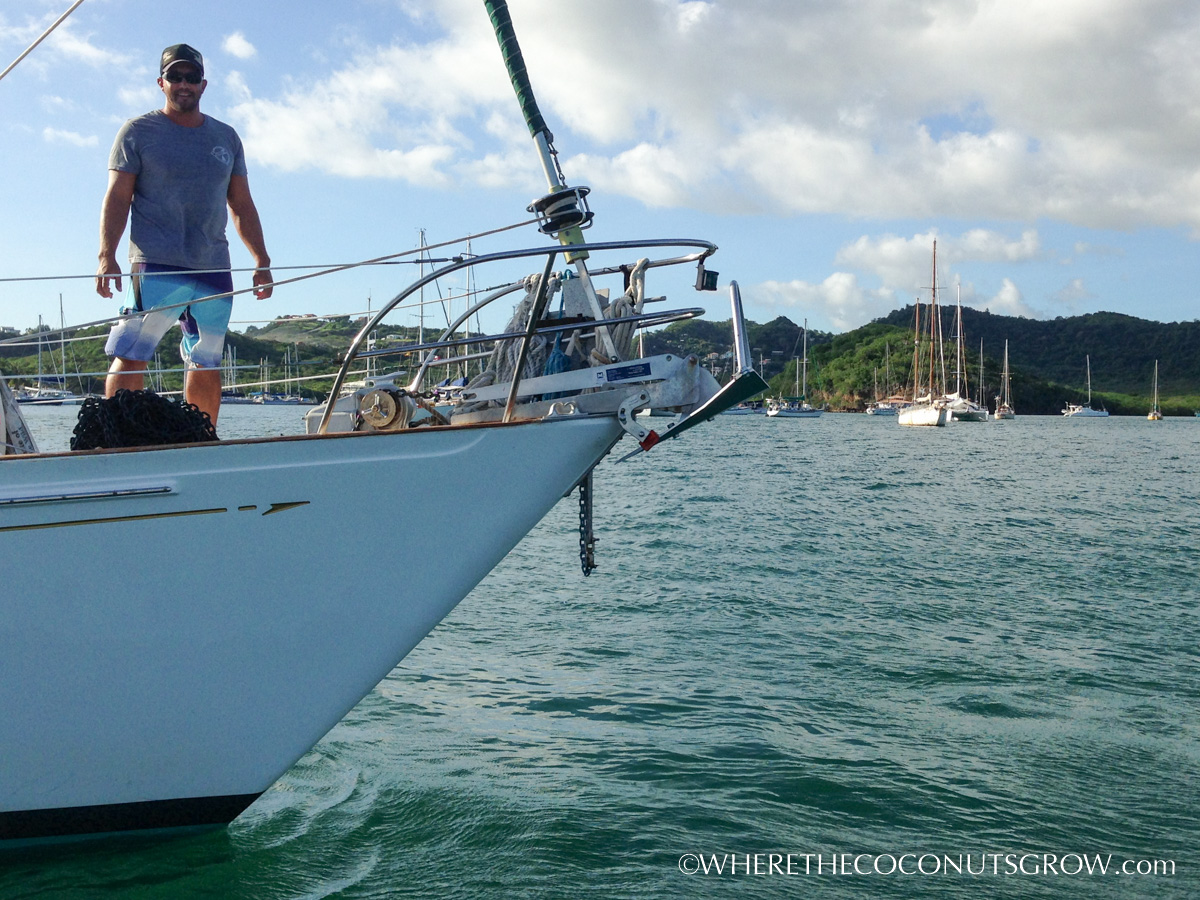
Literally within two days of installing our new Mantus, a nasty 45 knot squall came through our anchorage. Of course it held like a charm but I couldn’t believe how much better sleep we both got that night knowing we were totally secure.
***
You must know that this all happened two years ago. Yes, you read that right, two years ago. It’s taken me that long to actually write about it. Shortly after Mantus shipped our new anchor to us down in Grenada, our sweet boy Gunner took a turn for the worse. We knew the end was near but it was around this time that things were getting especially difficult to care for him. Simultaneously, we literally ran out of money and were making plans to sail back up to the Virgin Islands and begin working for Aristocat Charters. The relaxed life we had known for the past two years was starting to turn upside down.
Before we made our journey North, we stopped at the Tobago Cays in the Grenadines one last time and got some REALLY cool underwater video of Peter repeatedly lifted our new Mantus Anchor out of its holding while I then gently backed down on the engine and he recorded how quickly it reset itself in both sand and turtle grass. The water was so clear and the footage turned out amazing. I was SO excited to post it!!
I went to transfer the footage from the Go-Pro to my laptop and after the import was complete the program was set to automatically delete the files from the device. (I know, stupid, right?) For some awful reason, the files were not actually imported, and yet they got deleted anyway. I spent countless hours researching how to recover them since I also had video on there from Gunner’s very last beach day ever in Carriacou :( I was unsuccessful and totally crushed. Since then we immediately started working in BVI with few days off which meant our boat did not leave our mooring ball for almost all of the last two years. Needless to say that didn’t give me any opportunities to replace our amazing video proof of just how much we love that Mantus anchor.
You really do have to see it to believe it. Peter was blown away the first time he saw it in action. Anytime the water visibility is even remotely clear enough to see our anchor, he ALWAYS dives it to make sure it’s dug in really well. If he’s not sure, he will either dive down and manually dig it in by hand, or he’ll signal for me to back down on the engine a little more until it grabs. A good anchor bite is one thing Peter does NOT take lightly.
With our previous Delta we frequently had to make adjustments before getting a good bite but with the new Mantus it was completely buried on the first try – every time. After watching the Mantus dig in from just the weight of our boat alone, Peter knew we made the right decision.
Even though we weren’t able to use our own anchor very much, Scott decided to put their 65lb Mantus onto their daysail catamaran, Aristocat, at the same time we began running that boat! We now literally have two years of experience with a Mantus from anchoring between one to three times EVERY SINGLE DAY on a much larger vessel.
Even in high winds and coral rubble, if you can get a good bite, that sucker isn’t going to budge. Someday when we start cruising again I will be 100% confident that a Mantus anchor will keep our little family safe.
***
On a side note, Mantus has some really cool accessories that also help to get the most out of our anchoring experience. We installed their Chain Hook for use on our snubber to prevent it from slipping off the chain and it works great!
We also tried out the Anchor Mate that prevents the anchor from swinging around while it’s stored up on the bow roller. This was something especially exciting for us because of the damage that our Delta had already done in some rough weather. It was easy to install and fits perfectly. We did measure to make sure both this piece and the anchor itself would fit onto our very old existing setup and we even had Mantus review some photos of the area around our windlass just to make sure. Now it doesn’t clank around or slam against the hull. Our anchor fits nice and snug when it’s not in use. I can’t even begin to express how impressed we are with their customer service.
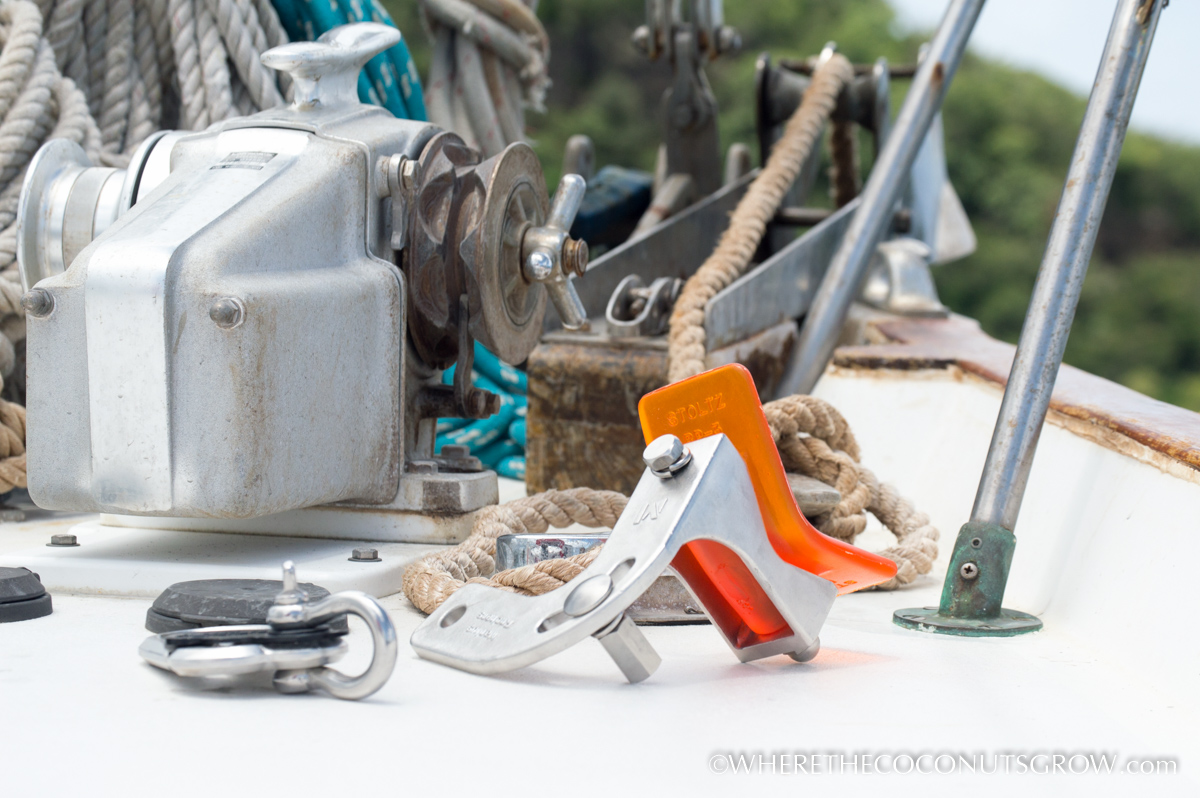
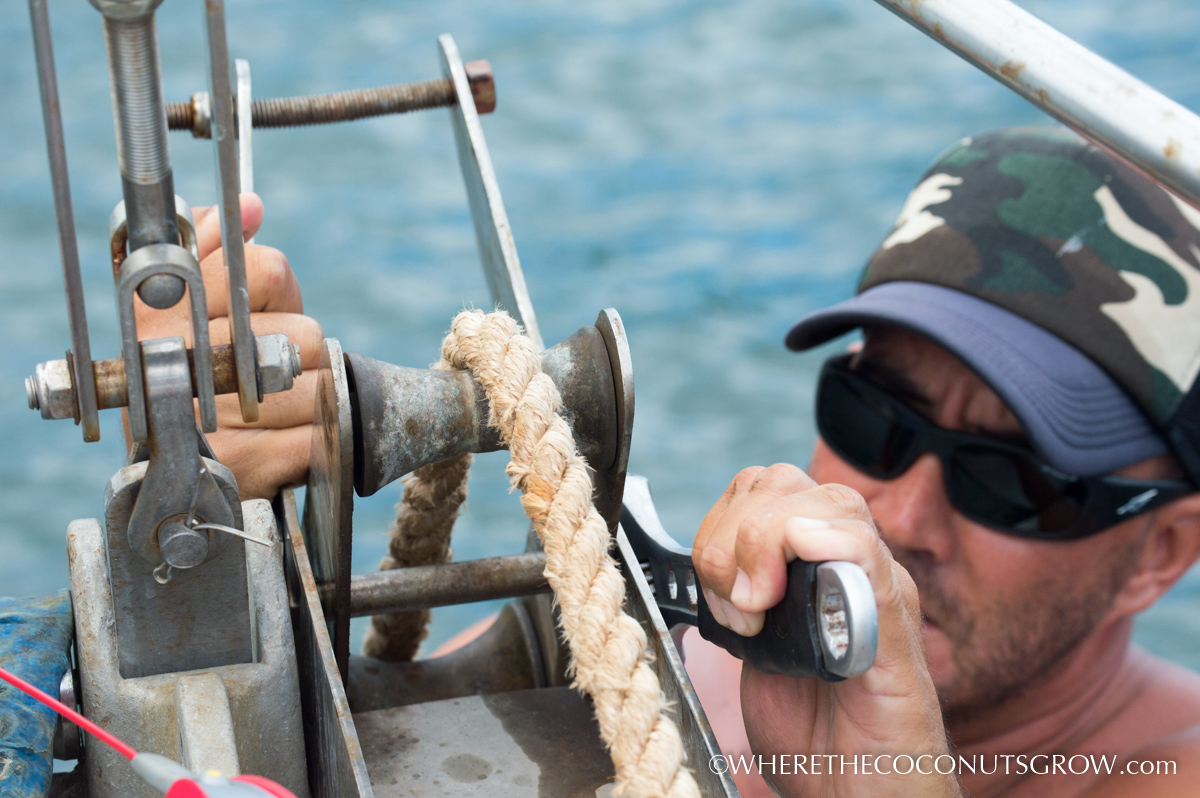
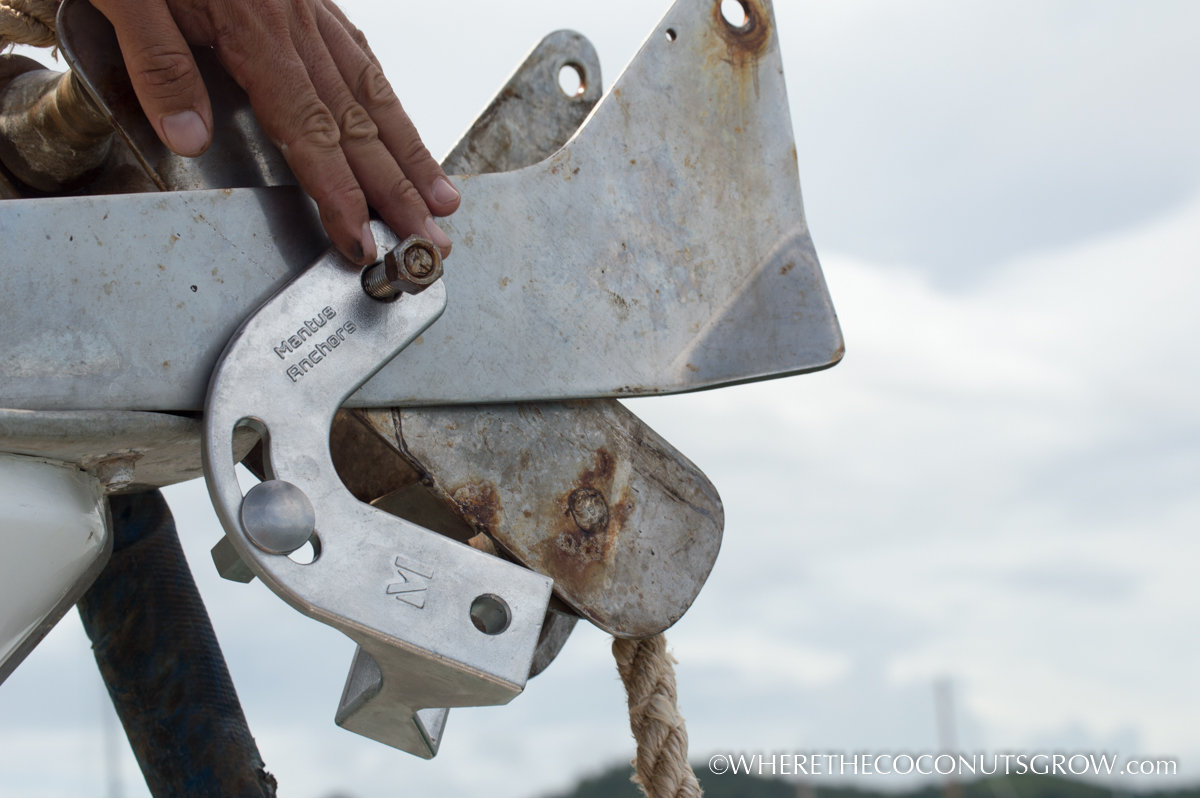
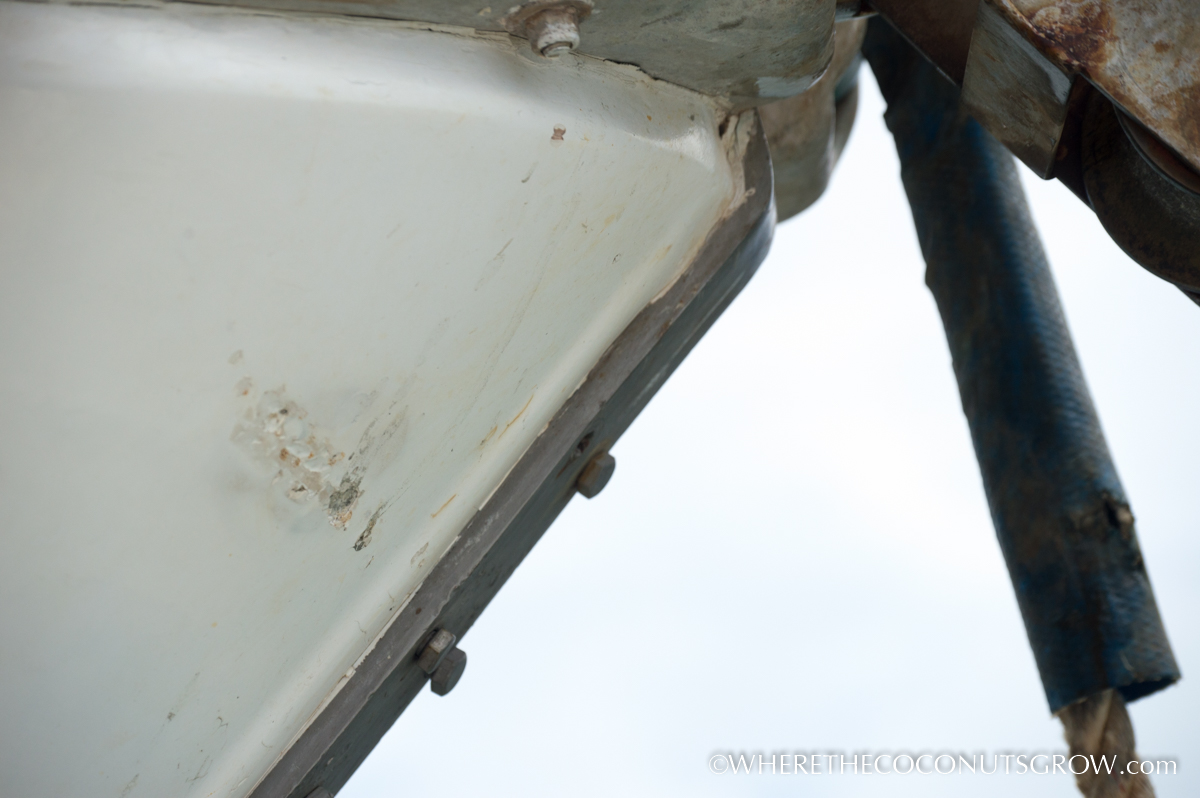
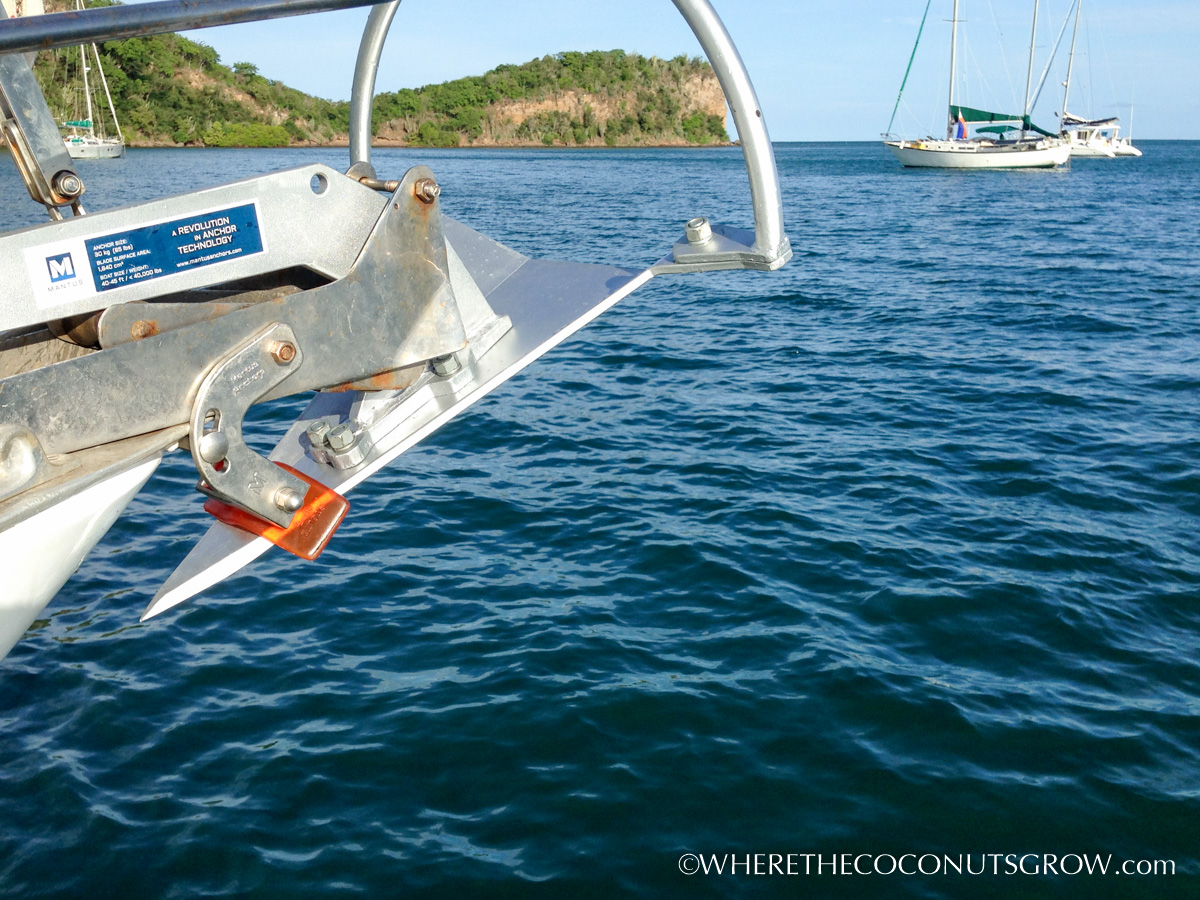
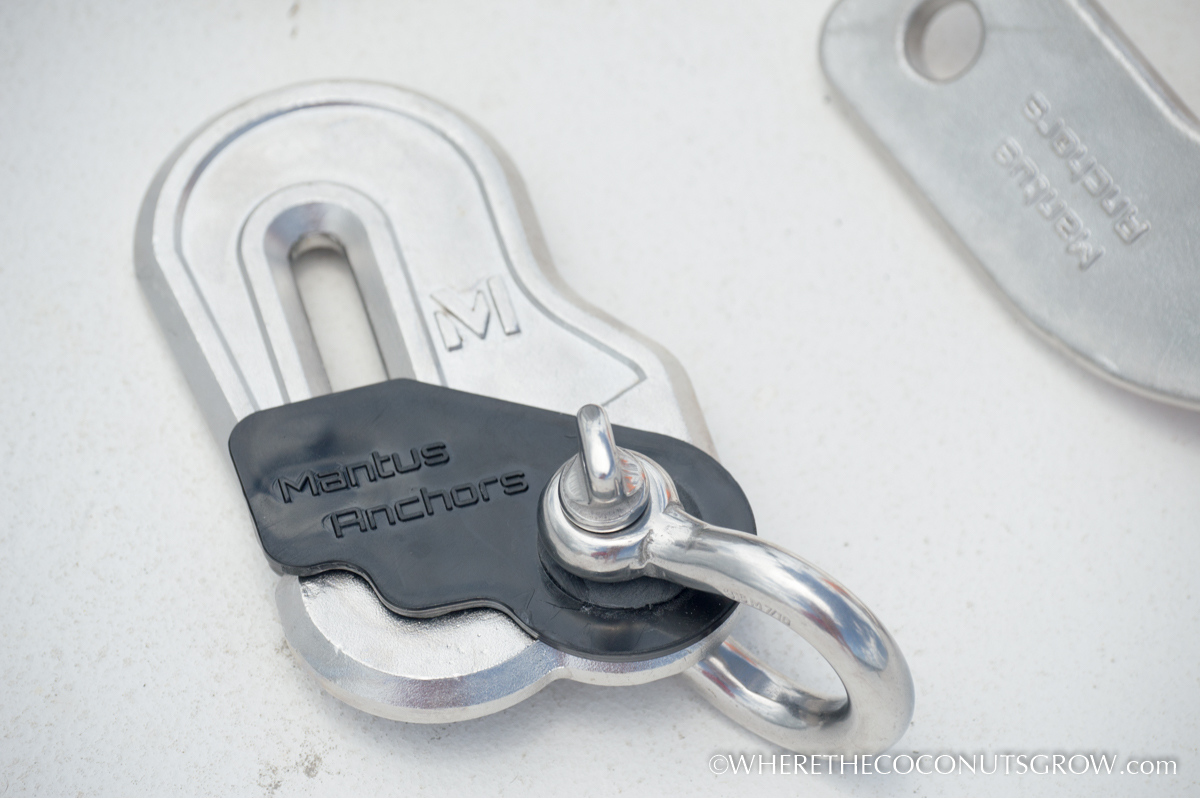
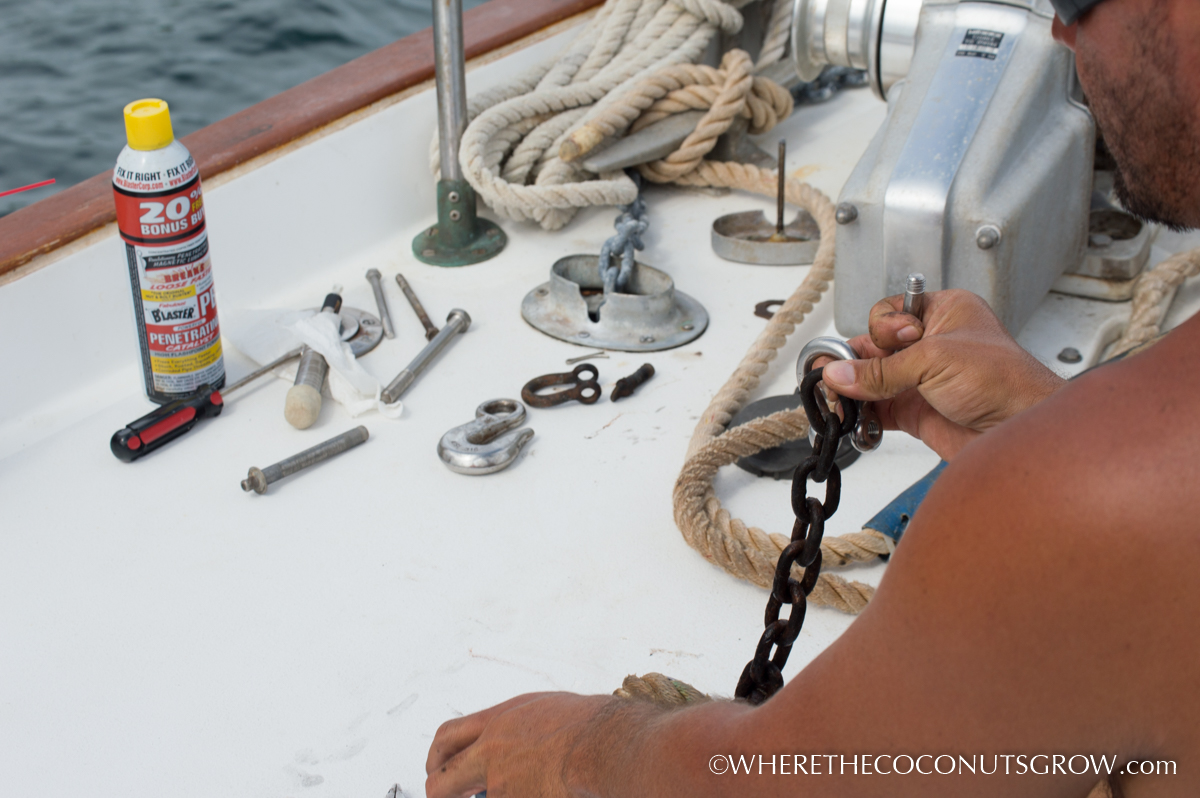
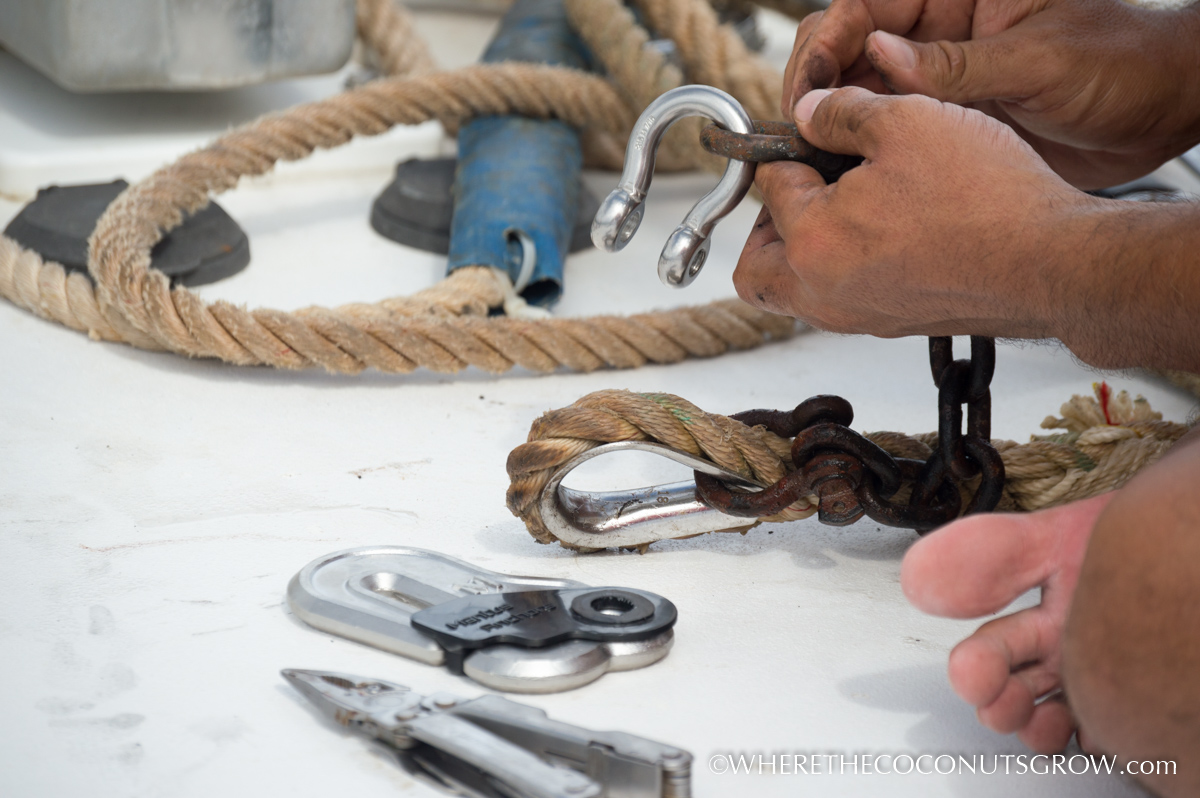
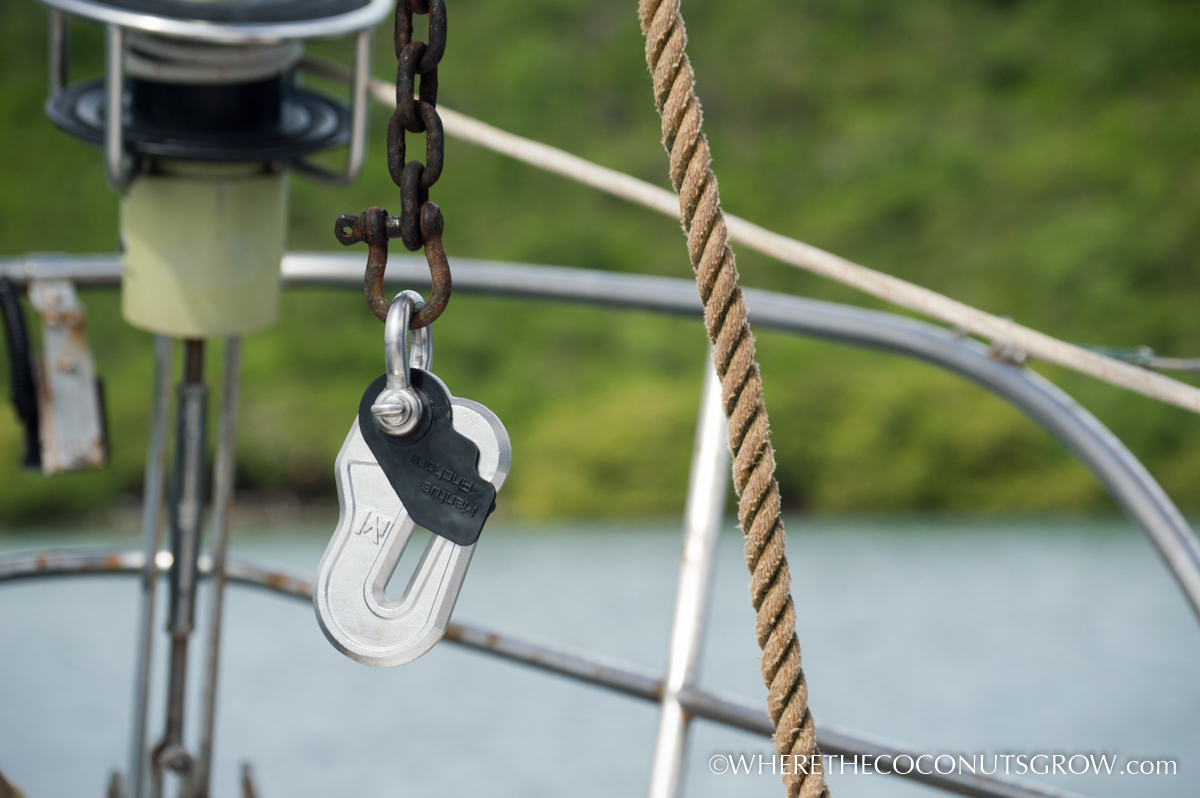
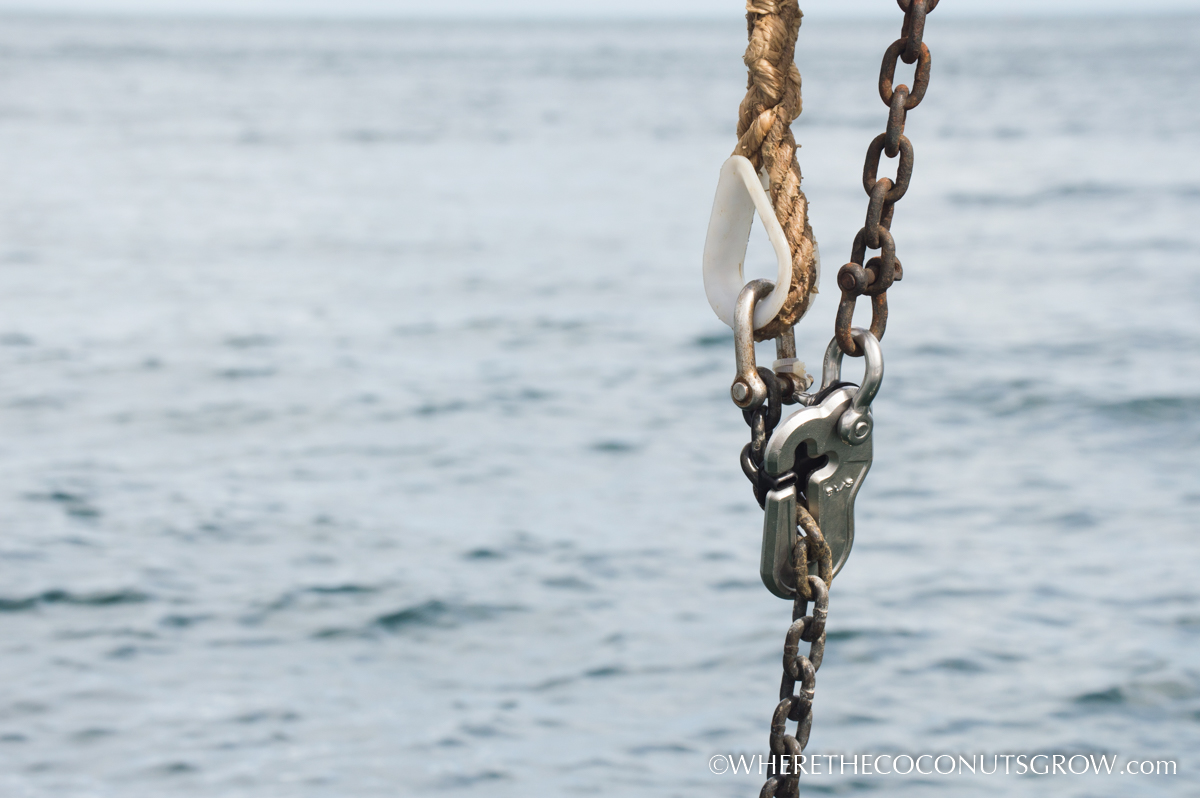
All in all, Mantus Marine is an amazing company with the highest quality marine products and it’s run by amazing people that truly understand what their customers want. Highly recommended!! If you’re in the market for any anchoring equipment, do yourself a favor and reach out to Mantus Marine.
**HURRICANE IRMA UPDATE**
Okay, so everything above was written BEFORE the largest Hurricane on record in the Atlantic basin took a direct hit over BVI and our boat. I never got around to publishing the above post.
Fast forward to the days just before our boat saw winds of 240+ mph, I’ve got to tell you what happened to our Mantus…
Our Hurricane plan was approved by our insurance company as a written description of the preparation Peter would take to secure our vessel along with a visual diagram of where she would be inside a very protected corner of Manuel Reef Marina, Sea Cows Bay, Tortola BVI. It was a known hurricane hole and one of the best chances we had to protect our boat. Peter had tied up Mary Christine the best he possibly could with all the lines he could get his hands on, spidering them off to the concrete dock, surrounding boats, and had a total of three anchors set to hold her away from the dock. She sat parallel on the concrete wall separated by wood boards, tires and fenders. The “dock” where we were tied up was actually more of the edge of the parking lot for Gene’s Restaurant where we could literally drive our car up to our boat.
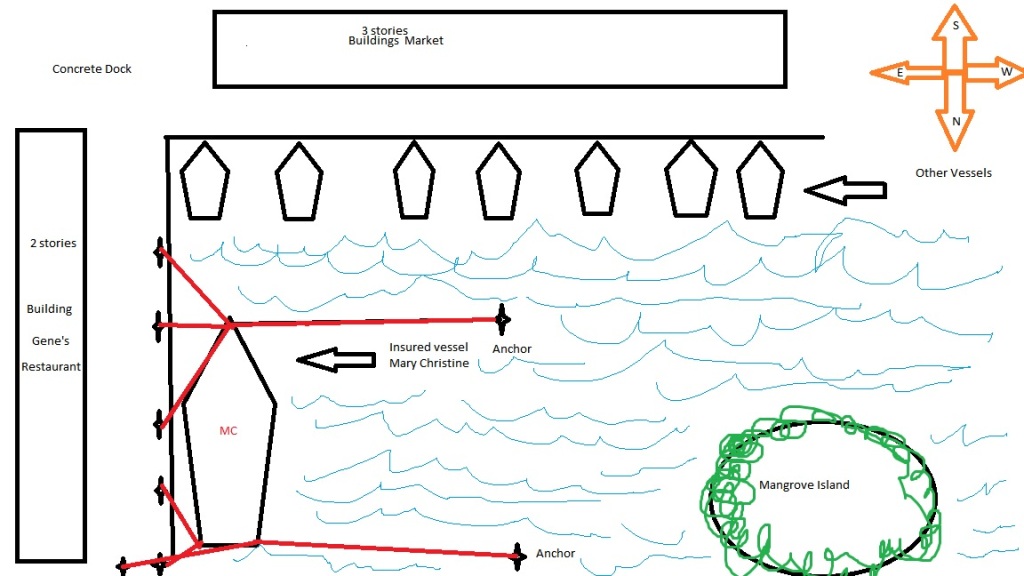
Since this wasn’t a typical anchoring scenario, Peter used a dinghy to distribute the anchors around the boat while it was tied to the dock. He set a Danforth style anchor off the port stern and another Danforth anchor from the starboard stern. He then placed the Mantus off the starboard bow. Now, when there is an approaching hurricane, all the boats inside this area have to wait until tropical storm force winds are present to pull their anchors tight because all of the local ferries drive through this channel at the very last minute and they have no regard for anyone’s anchor chains or rode that will ultimately be crossing the channel. They simply drive right over them, destroying hours of prep work by all the other boats already tied up. It’s awful, but it’s just the way it is here. Sure enough, many of the boats you see in the photo below on the mangrove island had their stern anchors ripped out after tropical storm force winds arrived when all the ferries drove in. What I’m getting at is that Peter had to literally stay at our boat until the final hour before he could pull our anchors tight and get to a safe place during the worst of the storm. I can’t even begin to describe to you what kind of sickening feeling this created, both for me watching the news from afar, and for Peter having to live through this nightmare.
The Mantus was our best anchor and to get a really good bite he actually tied the rode to the frame of our SUV and set it with the car!!
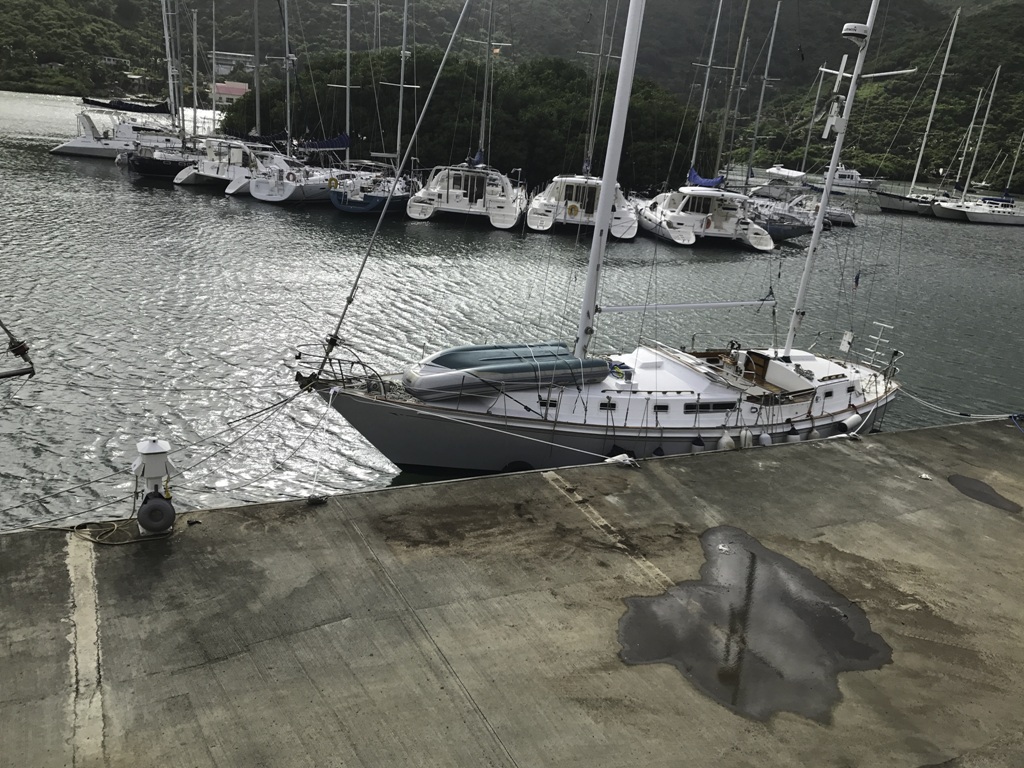

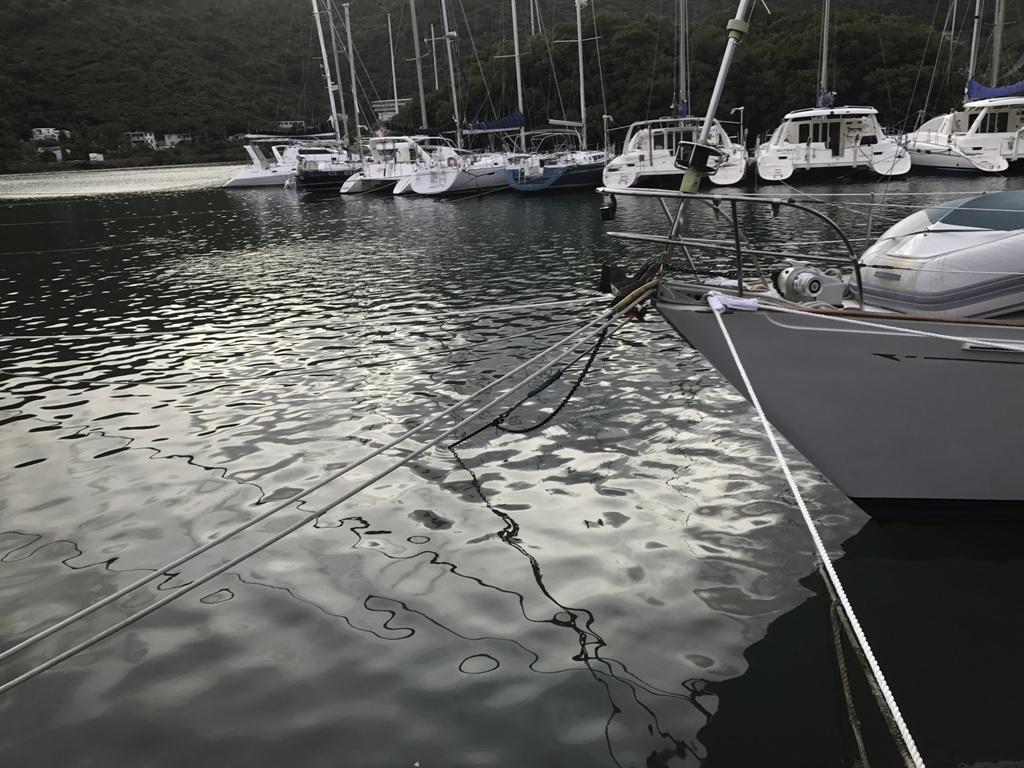
We knew Irma was going to be big, but no one could have known just how intense or destructive she would be. The first hit from Irma’s eyewall completely stripped the bolts out from inside the cleats on our boat, ripping the cleats and the winches completely off of the port side.
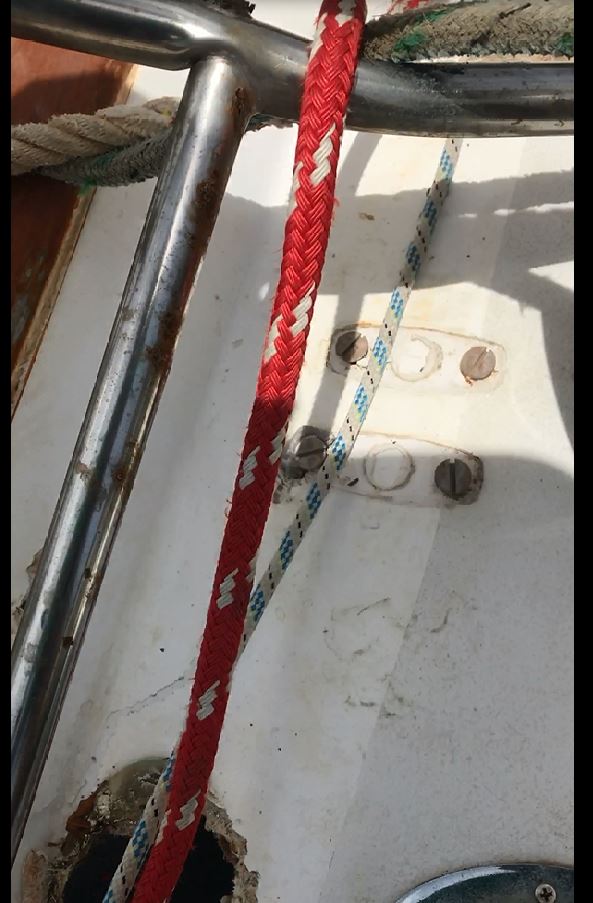
There was nothing left holding her to the dock so she went drifting out into the area between the dock and the small mangrove island inside Sea Cows Bay. The mizzenmast snapped in half along with several stanchions and the whole bow roller was ripped off. She must have taken some heavy blows because the hull to deck joint had a sizeable crack. The most amazing part is that when Peter finally got back down to check on her several days after the hurricane, the only thing holding her in place alongside the other boats on the mangrove island was that Mantus Anchor! Its almost funny because everyone told us no anchors would hold in this mangrove mud during a hurricane. They all said we’d never get a good bite.
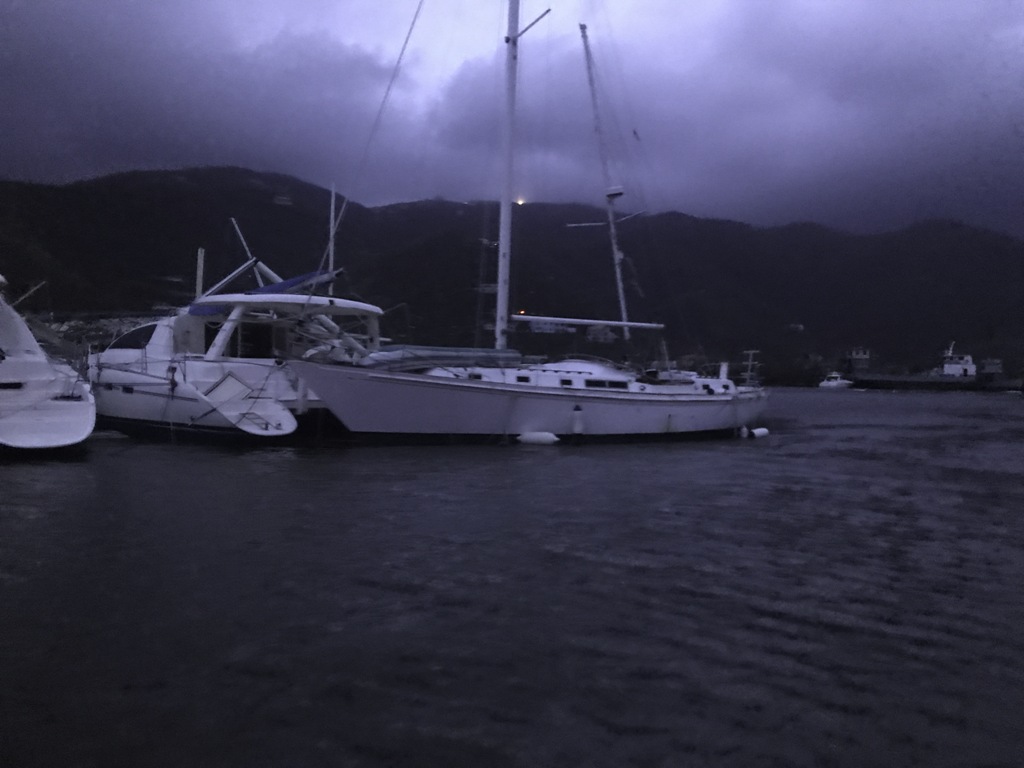
Here’s the kicker. When our friend Trent dove underwater after the hurricane to try to dislodge the Mantus anchor, he followed the chain with his hands and stuck his whole arm into the mud as far as he could, up to his shoulder, and HE STILL COULDN’T EVEN FEEL THE ROLLBAR!!! I remember reading comments from several people when we first researched the Mantus anchor years ago where they were skeptical of the design and how the roll bar was bolted onto the fluke. Clearly this is not an issue.
Peter and Trent had tried to drive the boat back and forth over the top of it and even had a dinghy wake them a few times in an attempt to wiggle the anchor loose but all it did was begin to grind the windlass motor and skip links of the chain on the gypsy. Nothing they could’ve done was going to dislodge it. In summary, our 65lb galvanized Mantus Anchor performed flawlessly in excess of 240 mph winds during the strongest hurricane on record in the Atlantic Basin! I’m confident that this is the only reason our boat is still floating to this day.
So what kind of primary anchor will we choose on our next boat? You better believe we will have a Mantus Marine anchor keeping our family safe.
IN CASE YOU WERE WONDERING… We are PROUD to share these awesome products and services with our readers. There are so many different solutions out there for everything we could possibly need, but these are the solutions that work for us.
This post may contain information about a product sponsorship. We gladly accept discounts or samples when a company feels generous enough to support our cause. In return we support the manufacturer or local service by sharing their links and writing about our experience with them. We only seek out sponsorship and affiliate programs from products and services we actually WANT to use and likewise only accept offers for products or services that we WILL use. We are not paid for any reviews we write or feedback we provide. We simply like to spread the word and share great experiences we have had that could also bring joy to others.
